














































Welcome to March friends, and spring is right around the corner. I’m writing this on the 22nd of February. This whole week has been in the 70s, and it’s looking like we could be 80 degrees before this month’s done. It’s our crazy Oklahoma weather!
This month’s cover picture is of the chapel out at Prairie Song. The picture was taken by David Gaede Sr. I believe this photo of this beautiful building sitting in the middle of a prairie is perfect for our cover. This month’s feature story is about an incredible journey back in time of how people lived and what they had in the middle to late 1800s. Debbie Neece has been wanting to write this story, and spent many nights writing it. If you have never been to Prairie Song, you have to go! Everything in each of the buildings is authentic to that time period. This historic site was started by one couple who said they were born 100 years later than they should have…that couple is Kenneth and Marilyn. We lost Kenneth last year, but one of our biggest fans - Marilyn - is still here to keep the story of this treasure alive and well. Thank you for all you have done!
For those of you who don’t know my story…March is a very special month for me…it’s the most significant month of the year for me. In March of 2007 during spring break, the most incredible thing happened to me. Almost two years before this date Christy took my hand in marriage, and we brought together each of our three kids as a family - all under the age of 12. I never knew what happiness really was until we were married and we came together as one. It was not more than 3 months after that day in July that I was hiding the biggest secret I could possibly hide…I had relapsed and was using cocaine again. After over 12 years of being clean, I was right back in it. To this day I cannot tell you why.
Everything I had ever wanted was right in front of me, and I was shooting cocaine in my arms and anywhere I could. The damage I did to my body was so bad. I was doing everything I could to hide it. A little over 3 months after being married, Christy tells me she is pregnant with our seventh child. Christy knew things were not normal. Month after month I got worse and worse where finally I had to come clean. Four days before Grace was born, I told Christy I was addicted to cocaine. It was not a good time for us, but we went to hospital and welcomed the anchor of our family, Grace. We called her Grace because it means a favor, a blessing, a gift from God.
Two weeks after Grace was born I went to treatment on Father’s Day weekend. I spent 30 days in treatment and was clean for about 60 days and relapsed. This wasn’t just a normal relapse, it was bad. The enemy
had me, and I was out of control. Christy kicked me out the house and had divorce papers written up. It’s hard to tell you the darkness I was in and the complete disaster that I had caused. I was married to my high school sweetheart, had seven beautiful kids, and I was completely lost. Living by myself I would get clean for 30 to 45 days later and just go right back in it. Addiction is a sickening disease no matter what you’re addicted to. My heart will always go out to those who are lost in this HELL!
In March of 2007 during spring break, Christy called me that morning and said she was going to give me one more chance. She said she would let me come home. She made that decision against many people’s advice. She believed enough in me…in us… that for just maybe one moment in time God would hear her prayer. He not only heard this one prayer but the thousands she had prayed for me. With tears falling down my face writing these words to you right now, I moved back in. God took away every want, desire, and need for cocaine. This month I celebrate 17 years clean! I give all the glory to God because I’m telling you I was so lost beyond being found. Only by Christy’s belief in God that He can restore all things am I writing these words to you today.
I have many scars on my body because of my addiction, but I am not ashamed of any of them. I actually like to show them off because it is a testimony of how powerful prayer is and what it means to believe in the unbelievable. So when you see me out and about, you’re seeing a miracle walking. Because one person did not give in and believed just enough against the impossible, Christy and I knew that anything is possible with God! For all who read this and maybe are addicted to or have a loved one who is - don’t quit - don’t quit praying, don’t quit believing, and don’t give up. You never know what might happen and the lives that person could change. I have danced with the devil many times but today after 17 years of being clean, I look in the mirror and see a man of God and the husband of Christy who never gave up on me! God bless,
Keith
Volume XV
Issue III
Bartlesville Monthly Magazine is published by ENGEL PUBLISHING
Offices located in Downtown Bartlesville in the historic Price Tower
510 Dewey Ave, Suite 400, Bartlesville, OK 74003
P.O. Box 603, Bartlesville, OK 74005
www.bartlesvillemonthly.com facebook.com/bartlesvillemonthly
Publisher Brian Engel brian@bartlesvillemonthly.com
Graphics
Copper Cup Images design@coppercupimages.com
Director of Sales & Marketing
Keith McPhail keith@bartlesvillemonthly.com
Community Liaison
Christy McPhail christy@bartlesvillemonthly.com
Project Manager
Andrea Whitchurch andrea@bartlesvillemonthly.com
Administration
Shelley Greene Stewart
Delivery and Distribution
Tim Hudson
Calendar/Social Media calendar@bartlesvillemonthly.com
Contributing Writers
Debbie Neece, Kay Little, Kelly Hurd
Aaron Kirkpatrick, Jay Hastings
Aaron Vaughn, Brent Taylor
Keith McPhail, Jay Webster, Natasha Mitchell
Joe Todd, Abigail Singrey, Maria Gus Rita Thurman Barnes, Lori Just
Contributing Photographers
Erin McCaffrey Photography, Joel Rabin
Kathy Rogers, Craig’s Photography
David Gaede Sr., Becky Burch
Kids Calendar
Jessica Smith

Creative concept by





Quinn Schipper hails from far northwestern Minnesota. “I’m almost a Canadian,” he quips. Raised on a 1,200-acre grain farm, once crops were sown, a family vacation spelled adventure by car, train, or plane. It was the calm before hay baling and harvest’s frenzy. “There are two seasons that far north,” he claims. “Winter and August.” It was typical to have 30 inches of snow by Christmas; the earth blanked white for nearly half the year.
Quinn’s father, Vance, was raised on adjacent farmland and known for agricultural innovation. Vance was also civically engaged, serving on the museum, library, and cemetery boards. He began an alternative energy initiative and promoted recycling. His mother, June, was from the deep south of Alabama. Welleducated and cosmopolitan, she ensured Quinn and his three sisters had cultural experiences that included music, literature, and theater. In high school, Quinn played bass violin orchestrally in a nearby city symphony, sang in a choir, played on the marching band drumline, studied oil painting and pottery, acted on stage, and filled sketchbooks with imaginative house designs. Noting the latter, a teacher urged him to apply for the Frank Lloyd Wright School of Architecture.
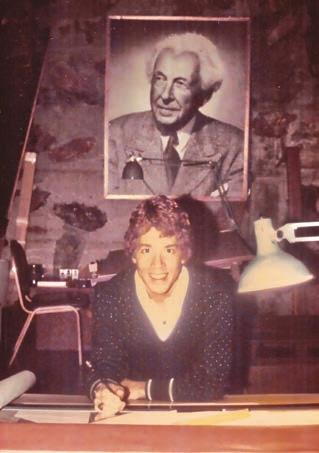

soon after graduating high school in 1975. Bass violin in tow, 1,800 miles separated the teenager from everyone he’d ever known. A new world of relationships and experiences blossomed, including weekly black-tie events with artists, celebrities, politicians, and others.
“The school had 30 apprentices and was comprised of an international body. For those who got that far, the last step was a private interview with Mrs. Frank Lloyd Wright, who had the final say.” Barely 18, Quinn joined the Taliesin Fellowship in Scottsdale, Arizona,
A longstanding, dear friend of Mrs. Wright was Bartlesville’s Mary Lou Price. Mr. Wright had designed a winter home for the Prices near Taliesin West. Mary Lou was occasionally present for an evening of cocktails, fine dining, and entertainment. “Come see me in Bartlesville,” she offered to Quinn. He took her up on it. The following summer, arrangements were made during the Fellowship’s annual migration to Taliesin in Wisconsin. “I was 19 years old when I arrived at Starview Farm. Mrs. Price met me outside her Cliff May-designed house. She was wearing overalls and muddy boots, having just gotten off a bulldozer.” Explaining that she was rebuilding the road to Shin’en Kan, she apologized, saying it would not be accessible. “Sadly, I never saw it.” However, Quinn relished the day, which included being entertained by Caroline Price at Hillside and ample time inside Price Tower. “It was magical and memorable.”
While at Taliesin, Quinn submitted an earth-bermed solar house design for the annual Box Project with his parents in mind. The plan was realized as a solar-powered, geothermal novelty with no conventional heat source. “Dad did all the engineering of the alternative energy components and built the house. His goal was to take the entire farm off the grid.” Quinn also designed the earth-bermed contemporary church building for the congregation he grew up in.
There’s a dominant theme in Quinn’s life that he declares is foundational: faith. When the doors of the church were opened,
the Schippers were there. His dad was an elder; his mom played piano, taught Sunday School, and directed Vacation Bible School. Even during the intensity of harvest, everything stopped for church.
“I was very single-minded about pursuing architecture. I’d decided that if I was not accepted to Taliesin, I would go to Bible College.” God has a mysterious way of guiding one’s life. Even though he knew Jesus growing up, his relationship with the Lord flourished independently of his home of origin and childhood influences. While recovering from foot surgery at Taliesin West, Quinn experienced what he calls his adult decision to follow Jesus. It was a personal and powerful encounter that changed the trajectory of his life. Six months later, he walked away from his dream to be the next Frank Lloyd Wright to take up biblical studies at Manhattan Christian College in Kansas.

What was meant to be two years turned into ten. During their final three years, Quinn administrated the Distance Education Department of the Bible College of New Zealand.
Fast forward to 1995, when Schippers landed in Stillwater, Oklahoma, and started a ministry focused on uniting the Body of Christ. That expanded into a second, communitybased nonprofit to address the prevention and alleviation of poverty. Ultimately, 42 churches, multiple nonprofits, and other entities got on board.
“We introduced the Charity Tracker data system for managing the network, Bridges Out of Poverty resources, Getting Ahead classes, and more.” One monumental achievement was consolidating all the local food pantries and helping create yet another nonprofit, Our Daily Bread food and resource center.
At MCC, he met Becky Worcester, who accompanied him for an audition for the school’s traveling choir. The rest is history, as they say, and the two will celebrate 45 years of marriage this coming May. “Becky was an unconventional farm kid also. She could chase pigs in high heels.” (Ask Quinn about that sometime.) They soon discovered they had much in common, including attending the same church camp as ten-year-olds. Both hold degrees in Christian Education and are Montessori educators.
Soon, another unexpected turn of events occurred. After graduating from MCC, Quinn worked with infants and toddlers at Hope Montessori Academy in Creve Coeur, west St. Louis. The Schippers got involved in a nearby church plant where they taught preschoolers and composed children’s songs. And then, it happened. An unforeseen “call of God” yet again disrupted life’s ambitions. In 1985, the Schippers suddenly were living on the other side of the world, church planting in New Zealand.

Meanwhile, the road between Stillwater and Bartlesville became familiar because, early on, Schippers joined the Price Tower Arts Center. Any excuse was a good reason to head to Bartlesville! Alas, the two became Texans in 2017, and Denton foreshadowed another abrupt change. One morning in midJune 2020, Quinn was prayer-walking downtown when the Lord surprisingly reminded him of Bartlesville. “It came out of the blue.” On Thursday, June 25th, Schippers drove to Bartlesville and signed a lease on a new apartment at Hotel Phillips. On Monday morning, movers loaded a truck. Providentially, while moving in, they met Keith and Christy McPhail, who had come by the hotel on a B Monthly assignment. “They were our first guests for a meal.”
If you ask Quinn, “What do you do?” don’t be surprised if he answers, “I follow Jesus.” That’s it. From Day One in Bartlesville, Quinn has been prayer-walking downtown. He became a docent at Price Tower. Schippers joined the Chamber of Commerce, and the following June, Quinn was presented the Jake Bartles Award at their Annual Gala. He’s civically engaged and has not missed a City Council meeting. He’s currently serving on the City Planning Commission, the Comprehensive Plan Advisory Committee, and the Water Resource Committee. Quinn is the administrator of the Republican and Other Conservatives of Washington County. He and Becky each lead interdenominational Bible Studies and are involved in several prayer groups. Did I mention he’s a published author? That’s a story for another time.
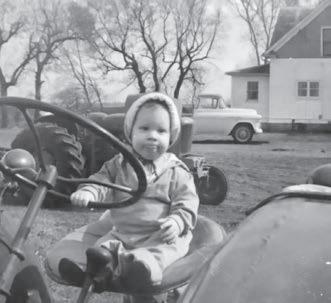
We live, work, and play in Bartlesville, and we’re proud to serve our neighbors with integrity

Experienced, Honest, Local



Homestead, Prairie Song, I.T.

It has taken an “army” of pioneers from all races to transform sticks, stones and a few river streams into this thriving state. And, it’s through family memoirs and historians who have left a documented patchwork quilt of history that we are able to tell their stories of toil and triumph. Such a place is the multigenerational Moore Ranch, east of Dewey, OK.
William Sherman Moore came to Indian Territory in 1884 and was employed by the Cherokee Cattleman’s Association as a line rider overseeing cattle grazing upon open range. He married a Cherokee Indian maiden, Mary “Emma” Scudder in 1898 at Chelsea, I.T. The birth of the Moore Ranch began with Emma’s 160-acre Cherokee Land Allotment and Moore acquired land surrounding the allotment as it became available. The couple raised three children: Marie, Sherman Monsieur, and Clarke Scudder Moore.
After the death of W.S. Moore, the ranch was divided
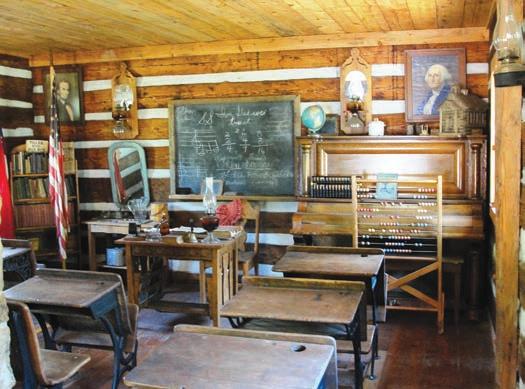

among his children with Monsieur Moore taking responsibility of thousands of acres on the western portion of the ranch, around Hogshooter Creek. Monsieur married Leona Edwards and they lived their lives in the shadow of Blue Mound, where Leona was well known as the pioneer cook for the ranch hands and passersby. Their daughter, Marilyn, said “her skillet was never empty and her coffee pot never cold.” Monsieur gained notoriety for his horsemanship. He served as president of the American Quarter Horse Association and was founder of the Junior Quarter Horse Show. In addition, the Monsieur Moore Quarter Horse Show at Dewey was of National prominence for many years. Leona died in 1979 and Monsieur followed her in 1994. At that time, their only child, Marilyn Moore Tate inherited the ranch, a legacy she holds close to her heart.
Kenneth Tate and Marilyn Moore were a match made in heaven and agreed they were born 100 years too late. Kenneth’s country dairy farm upbringing never left his soul. He attended Highland Park School, Rice Creek School where he received the Handicraft Award in 1946 and graduated from College High School. Perhaps his Rice Creek teacher saw a talent in Kenneth
In 1988, Kenneth and Marilyn Moore Tate were recognized as Historians of the Year by the Washington County Historical Society. Then, in 1989, the Oklahoma Historical Society and the Oklahoma Department of Agriculture established the Oklahoma Centennial Farm and Ranch Program to recognize families who have continuously occupied their land and carried out farming or ranching operations for at least 100 years. In 1999, the Moore Ranch was recognized as a Centennial Ranch and the ranch history was documented in their highly acclaimed commemorative book.

long before we did. He had a trucking business and brick company, but his roots were planted in the country. Marilyn was a beautiful young working cowgirl who captured the eye
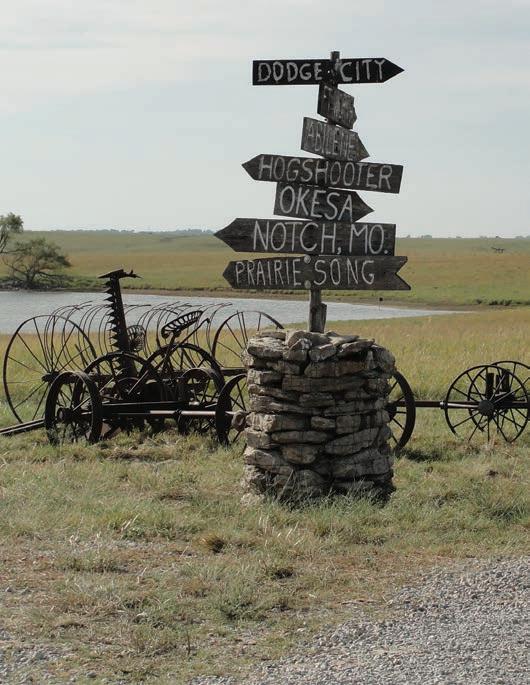

of many a cowboy. She grew up on the Moore Ranch, wearing blue jeans and cowboy shirts, riding alongside the cowboys, working cattle and repairing fences.
There is something to be said about the simpler times, when men worked the land from sun up to sun down and built from the ground up. Kenneth had long studied many country cabins and he said, “I thought to myself, if I get the opportunity to build anything like that, I’ll do it to the best of my abilities and make it authentic.” What whispered to Kenneth and Marilyn as a dream, roared into reality as a full-fledged country pioneer village surrounded by acres of tall bluestem grass and decorated by rusted wagon spoils of years gone by. Such was the dream that began as a “honeymoon log cabin” on the prairie east of Dewey, overlooking Hogshooter Creek.
The vision of the Hogshooter Homestead began with a log cabin built at Silver Dollar City, Branson, MO, in 1982; however, the cabin was out of Kenneth’s price range. So, he hired two Branson area gentlemen, Jim Bass and Willard Jones, to cut some oak logs and hand-hewn them over the winter so he could build his own cabin. In the spring, a call came that the Silver Dollar City cabin had not been sold and the price was reasonable. Jim said, “I know what they’ll do, they’ll tear it down and throw it on the back lot to rot. If you get over here now, you can probably buy it for a SONG and sing the song yourself.”
The next morning, Kenneth and Marilyn pulled into Silver Dollar City with intentions of buying the cabin. After some “horse trading” negotiations, Kenneth traded his hand-hewn logs in on the cabin and paid the balance. That is when the real work began. Just like an episode from the television show, Barnyard Builders, Kenneth painstakingly numbered the handhewn Missouri Bull Oak and Arkansas Pine logs as the cabin was disassembled and loaded on his semi-truck to haul back

to its new perch, overlooking the bluestem grass valley of the Moore Ranch. He was pretty pleased with himself. Then came the task of re-assembled the cabin log-by-log, old pioneer style, with lots of chinking. According to Marilyn, reconstruction was a tedious task, “this was not like Lincoln Logs, if one numbered


log was placed incorrectly, the cabin became a leaning tower.” The original cabin had a fireplace that could not be transported so Henry and Randy Herren built Kenneth a masterpiece oversized fireplace for the cabin.
There wasn’t a bathroom in the honeymoon cabin, and Marilyn was insistent, so Kenneth fashioned a three-piece washroom on the back porch; which he said got him out of the doghouse. And, they put a “Tom Mix Rocking Horse” upstairs to keep the kids out of meanness, said Kenneth. On the bed, a quilt from John and Nina Anthony who used to have the Silver Dollar Café, and the solid wood back door with a hand-carved cabin scene was created by a Silver Dollar City Craftsman.
The pioneering team took their small piece of clay and molded their Hogshooter Homestead far from the hustle of ranch life, where most people could not find them; a place of rustic solitude and serenity, where time has stood still, bringing forever life to their dusty frontier dreams. Kenneth never used blueprints, just a vision and labor of love using his outstanding authentic craftsmanship and meticulous attention to detail in creating the buildings and selecting antique furnishings to tell the story of a time long forgotten.
Six months later, the Homestead Cabin and fireplace had been built, and Kenneth and Marilyn visited Silver Dollar City again. Kenneth saw the logs he had sold to SDC laying in the field and bought them back for half the price SDC gave him originally. Kenneth hightailed it home and took his semi-truck to get the logs the very next morning, before SDC changed their mind. This handsome load of materials allowed him to build the Homestead Barn.
Marilyn said, “Someone visited and said you’ve got the cabin and barn, where’s your schoolhouse? Where’s your Chapel? All Kenneth needed was the challenge and he was off to the races. Before Marilyn knew it twenty buildings were on

the ground and she said “After that, when someone would say what about…?” Marilyn would put her hand over their mouth because Kenneth would be building again. It didn’t work. The building continued until thirty buildings were on the ground… each building purposefully, thoughtfully and authentically built, resulting in a full-blown frontier village museum, filled to the brim with collectables and engrained with history.
Marilyn said, “We were just building a weekend cabin, we had no business plan and look what happened! When we scheduled our first wedding, the couple sent us a wedding invitation stating their ceremony would be held at Hogshooter Homestead. And, I thought to myself, Hogshooter Homestead is terribly unromantic.” So, for three years she scoured Louis L’Amour books looking for romance. She watched western movies and read everything from northeastern Oklahoma to pour romance over the western frontier. Everything sounded commercial and stark so she felt it was time to seek a higher power. On her walk from the country cabin to the ranch house one beautiful spring day, the bluestem grass was waving in the wind and the birds were singing and it just burst out of her mouth, “Oh my goodness! Lord Jesus, what a wonderful, wonderful song of the prairie!” Like lightening had struck her, she exclaimed PRAIRIE SONG!
It wasn’t until Kenneth and Marilyn had invested 10 years in the project that Marilyn finally understood they “had a tiger by the tail” so to speak. “It became a passion for both of us and we felt extremely blessed to know what a passion for something is in life.” Some might say from a single cabin erupted an obsession and furnishing of every building put an explanation point on that obsession! The historically accurate furnishings and artifacts came from antique stores, auctions, and

some were family heirlooms. I personally saw Kenneth in action at a Minuteman Auction at the Dewey Fairgrounds…he had his eye on a railroad lantern for his Train Depot and by golly he was going to have it. Marilyn had settled in with dinner from the concession stand and once Kenneth won the railroad lamp, he and Marilyn loaded up and went home. According to Marilyn, a few blocks later, Kenneth proclaimed, “I’m starved, let’s get something to eat.” That is not to say that all of the artifacts were purchased, there were some mighty generous people who have gifted treasures as well and Kenneth never forgot your name or the story behind each gift.
The country life offers a slower pace that required a slower speed to get there, 15 miles per hour over a dusty gravel trail

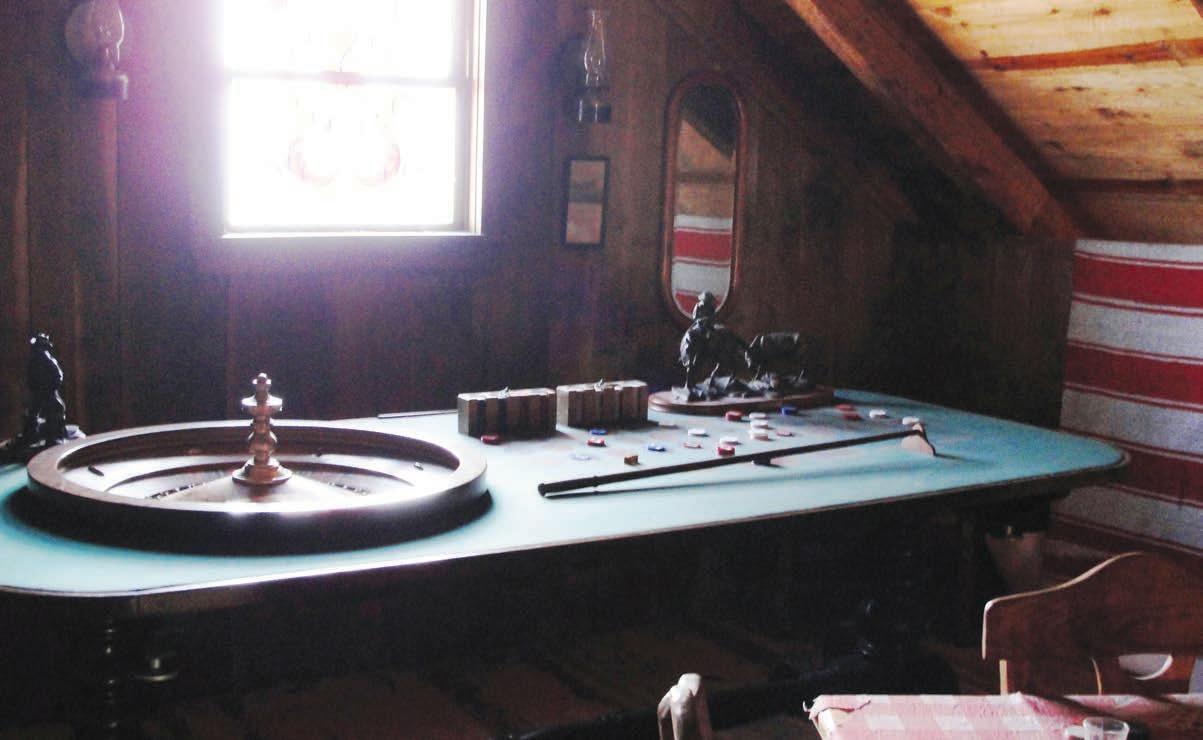
to the heart of Prairie Song, Indian Territory where the jewels of the Hogshooter Homestead welcome all who feel the calling. Kenneth never travelled the trail alone. His constant companions, Maggie, Sophie and Rosie, the Yorkshire Terriers, were always by his side, whether he was mowing, riding the 4-wheeler, going to town in the pickup or enjoying an episode of Gunsmoke in his recliner, one of the “gals” were always by his side.
The country community’s rustic charm is enhanced by rusted farm implements and barbed wire surrounded by a handmade wooden fence. Stone benches and tables serve as outdoor dining, a place for gossipy conversation or perhaps a place to rest one’s weary bones on a lazy afternoon. With the
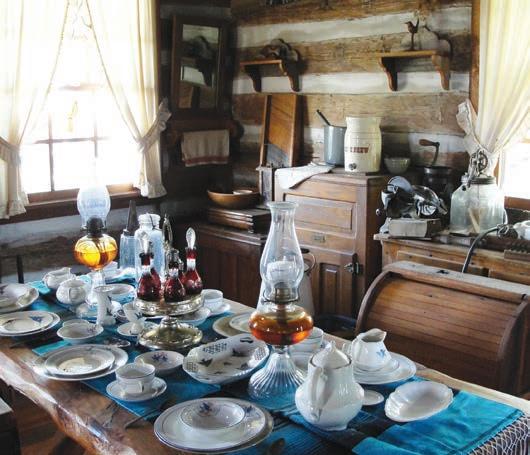

completion of each building, the next work of art began to take shape and the building materials came from across the United States.
Construction of the Homestead Cabin was completed in 1983, followed by the Homestead Barn, Scudder School, Teacher’s Cottage and the Wildwood Chapel overlooking Hogshooter Creek. Kenneth Tate’s ever working hands blossomed a dream into a full-blown hobby which evolved into a country village with an additional 29 buildings joining the honeymoon cabin, lining both sides of the country lane. With each structure came a date. If the building was constructed in 1983, the building bore the date 1883…a labor of sheer love.
Each stone, brick or dovetailed log building holds a story and the artifacts that fill the buildings tell the history…a blacksmith building; a hardware and general store; “Petticoat Junction Water Tower” with a shower outside; a barn for Kenneth’s “Surrey with the Fringe on Top” and his pride and joy, a gorgeous Indian Motorcycle, now treasured by Kenneth’s grandson, Shawn Tate; Naughty Nelle’s Saloon where Ms. Becky Doenges Dillon often portrayed Madam Naughty Nelle, Big Nose Kate’s photo graces the wall and light hearted shenanigans often occurred; jail where Rooster Cogburn (Professor Clarance Benes of Pawnee) kept law and order during Western Heritage Weekends; fully functional two-seater outhouse for the Ladies and Gents; the Scudder One-Room School with playground equipment, school bell and teacher’s cottage; Post Office,
Louis Nizer once said: “A man who works with his hands is a laborer; a man who works with his hands and his brain is a craftsman; but a man who works with his hands, brain and heart is an artist.” Kenneth Tate was an artist who created his vision of the 1800s.

Land Office, Telegraph Office in one building; 1897 Bank with a giant ball safe from Bartlesville’s Union Bank, safety deposit boxes donated by Larry Thrash and more; Cy and Jim Young’s Surgical and Medicine office; Jim Boyd’s Leather Shop…this list continues a life time and is draped in “prairie lace” commonly known as cobwebs. And, Bones, the dog, entertained visitors by playing dead at Kenneth’s command.
If you’ve ever visited Prairie Song, I.T., east of Dewey, Oklahoma, for the Wild West Show during the Tom Mix Western Heritage events, or perhaps attended a wedding in Song Catcher Hall or the Wildwood Chapel with its beautiful stained glass, or maybe even a special organizational event in Naughty Nelle’s Saloon, or as a student you visited the Scudder OneRoom School…you have been blessed by the country charm and hospitality of Kenneth and Marilyn Moore Tate.
Prairie Song is where Western Heritage Weekend brought a full country breakfast and cowboy church followed by a Wild West show complete with a bank robbery and gun fight at noon, longhorn cattle drive and rodeo events that brought back


memories of the famed Dewey Roundup (1908-1949), which annually brought tens of thousands of people from across the United States and points beyond for a 4th of July celebration like no other. A country western party weekend that filled downtown Dewey to the brim with excitement and brought celebrities like John Wayne’s grandson, John T. Wayne; Tom Mix’s grandson, Gordon Hill; and Bob White who owns Tom Mix’s Cord automobile. In addition, this is where OK Mozart captured the country soul of music echoing battling banjos and fiddles throughout the Hogshooter Valley.
This is also where a lightning-fast fire roared across Washington County and the Moore Ranch, threatening Prairie Song on November 11, 2015. Kenneth was a gut-wrenching nervous wreck, panicked and exhausted from the stress. Fueled by tender bluestem grass and howling “gale-force” winds, the flames danced ever so near the building foundations as a small army of volunteers ascended upon the ranch with a countywide, all hands-on-deck effort to save Prairie Song. Water was in short supply and Phillips Petroleum Company sent a water tanker to help fight the battle. The sky took on an amber ash glow whipped by howling winds, leaving a char across the valley. It took an army of heroes to save our treasure; while sadly, some property owners were not as blessed. Thank you to all who volunteered, you are greatly appreciated.
Kenneth often shared country words of wisdom and humor which I call Kennethisms:
“There was seven of us kids and Ma put the milk in a fruit
“Prairie Song is a gift from Kenneth and Marilyn to all who make the effort to find this spot on the west bank of Hogshooter Creek. A unique and marvelous place, not just in Oklahoma, but in all of the world.” - Bill Woodard

jar and we had to sit there and shake it until we got butter and you had to stay sitting there, you didn’t get up because if you did, there was a hind-end kickin’ taken place and you furnished the hind-end.”
“Prairie Song is pretty important, unless you don’t like history, then it don’t amount to nothin’.”
“Everybody’s got something where they throw their money away…they’re libel to smoke, drink or chase women and I’m building a town.”
“Never catch rain water except in the “R” months or you’ll get wigglers.” September, October…
There is a code among cowboys and that code was deeply embedded in the soul of Kenneth Tate. The end came too soon for our western hero, his toiling hands laid to rest in the shadow of the Wildwood Chapel beneath the prairie soil he turned on a daily basis. There are characters in our lives who drop their life happenings to wrap their beings around comforting the sorrows of others while wiping their own tears. That blessing came from our reverend soul, Bible toting hero and dear friend,


Eulogy for Kenneth Tate, Delivered by Reverend Clarance Benes:
Kenneth Tate was a huge fan of John Wayne. No telling how many times he watched reruns with one of his “girls” snuggled in for the afternoon. The real-life Franklin “Rooster” Cogburn was an Oklahoma cowboy, moonshiner, and outlaw during the late 1800s. In movie adaptations, John Wayne played the “true grit” frontiersman; and, at Prairie Song, I.T., Rooster Cogburn aka Professor Clarance Benes portrayed our gunslinging lawman, keeping law and order.
Anyone who knew Kenneth, knew he was a hard-working man who insisted his way was the right and only way; but he was also generous beyond measure and his orneriness was core deep.
Pilgrims and Little Ladies, today we gather to say our farewells to a true western Champion, Kenneth Tate. John Wayne once said that truckers were the ‘modern Knights of the Road,’ and Kenneth, he was one of those knights. He rode the highways and byways, deliverin’ goods and stories far and wide. His tales could fill a book, and they all had that special Kenneth touch, a twinkle in his blue eyes and a laugh that could warm your soul. And unlike Rooster’s long-winded stories, Kenneth’s stories could be short and to be point, either making you laugh or scratching your head pondering its sometimesprofound meaning.
He and his Lady Marilyn built a western castle right here on these plains, a place they called Prairie Song. Now, Kenneth, he had the hands of a builder. He put up a saloon, jail, log cabins, schoolhouse, and even a church with a bell that rang for faith and hope. But let’s not forget, as Marilyn will tell ya, it was God who built Prairie Song. Kenneth and Marilyn were just vessels of His blessings.
Kenneth Tate was born when the Old West was givin’ way to the territorial days, and he lived through a time of hardships, adventures, and riches. He and Marilyn, they stood firm in the face of change, creatin’ a haven for those seekin’ the simple joys of the Old West. Through those swingin’ saloon doors, they
Professor Clarance Benes of Pawnee.
welcomed travelers and seekers alike, offerin’ ‘em a taste of that frontier spirit that flowed through Kenneth’s veins.
As we lay this cowboy to rest today, let’s tip our hats to a life well-lived. Kenneth’s legacy will endure, and he’ll be remembered as a true pioneer preserver of the West. Rest in peace, my friend. May your spirit ride on the winds of the prairie, and may God’s blessings continue to flow here at Prairie Song, from the heart and sweat you poured out into this land so Grand. Happy Trails.
Kenneth’s pride and joys, Song Catcher Hall and Wildwood Chapel are where weddings receive country blessings. Near the chapel, Kenneth placed a makeshift cemetery where his vision was to one time rest his soul. Our dear friend and history creator, Kenneth Tate, now rests in eternal peace, filling one of his greatest visions.
The story of Prairie Song is fascinating, the work involved has been back breaking and the legacy left in the wake has been beyond anyone’s dreams…except Kenneth and Marilyn Moore Tate. Where once the land was flooded with possibilities, the growth has ceased, I’m sure one building short of Kenneth’s

wildest dreams. To name each and every person who stood shoulder to shoulder with Kenneth every day and helped bring his dreams to reality would be impossible so please forgive me if I miss you but know your efforts brought creation to the open prairie and you are appreciated. A few to mention are Stephen Jardot, James Peck, Kenny Workman, Bob Haymaker, Dale Tate, Ronald Tate, Kenny Tate, Mark Tate, Larry Tate, Henry Herren, Randy Herren, Terry Melton, Gary Lee Peck, James Strickland, John Bellinger, Jack Spears, Alec Peck, Audi Banh, David West, Bob Bailey, Melvin Hoppock, Silver Dollar City Crafters and others. We would be remiss if not mentioning Mr. Calvin Berry, whose carving skills Kenneth greatly admired; Oregon copper sculptor Rex Morton; David Fairchild’s handcrafted oak barnwood furnishings; and Mr. Ron Nickel for his stain glass and wood craftsmanship. Take a bow gentleman, job well done.
Sincere appreciation to Joel Rabin and Kathy Rogers of CableOne Advertising for filming “Prairie Song – Journey Back to the Old West” preserving a history we hope to never forget. To Betty Keim for interviewing and capturing Marilyn’s memories from the past. In addition, to Bill Woodard and Larry Kerns for their strong family friendships. Thanks for the Memories!

Welcome Back…
This month we will visit Paul Dahlgren at 621 S. Johnstone Avenue, the northwest corner of Adams Blvd. and Johnstone Avenue. Dahlgren arrived in Bartlesville in 1910, armed with a petroleum engineering degree from the University of Chicago. He planned to try his hand in the developing oil industry and had a little help accomplishing his goal. His sister, Marie, was married to H.V. Foster, who had developed the Osage Nation’s Blanket Oil Lease and was already quite successful. Dahlgren’s ladder to success began with employment at the Barnsdall Oil Company, Bartlesville Gas Company and finally Foster Petroleum Company from which he retired in 1956, having risen to the position of president.

Dahlgren’s 621 S. Johnstone Avenue home and relocated their funeral business.
After the deaths of Ruth (1991) and Arnold (2010), the funeral service merged with Neekamp to become Arnold Moore & Neekamp Funeral Home serving Washington County at 710 S. Dewey Avenue. The building at 621 S. Johnstone Avenue sat vacant until being sold to the City of Bartlesville as part of a 2012 approved bond issue. The property was cleared, including the large alley garage that once house Arnold Moore’s antique funeral carriage, which escorted him through Bartlesville to his final resting place at Memorial Park Cemetery.

The Dahlgren’s first Bartlesville home was located at 621 S. Johnstone Avenue, a two-story, white stucco structure with rental rooms. In 1933, the Dahlgren’s contracted architect Edward Delk to design their Spanish style, three-story, stucco home, “south of Bartlesville.” Their country home at 2400 Terrace Drive later became the residence of Theo and Pete Silas, former CEO of Phillips Petroleum Company; currently owned by Chris and Angie Batchelder. The Dahlgren’s Johnstone Avenue home continued to serve as room rentals until it sold to Arnold Moore.
Moore attended the Worsham College of Mortuary in Chicago, then began his embalming and funeral career in 1938, working at John McCallister’s Funeral Home. The following year, he established his own funeral service at 500 S. Dewey; the two-story home allowed business operation on the first floor and living quarters on the second floor. Uncle Sam called Arnold to WWII and during his absence, his wife, Ruth, maintained the business. In 1950, the Moore’s purchased
In 1949, the Bartlesville Police Department was established at 110 N. Johnstone Avenue and in 1986 the entrance of the P.D. was turned south to 100 E. Hensley. The building did not weather Bartlesville’s 1982 tornado or 1986 flood well and needed to be replaced. The new building was constructed at the northwest corner of Adams Blvd. and Johnstone Avenue, 615 S. Johnstone.
South of this location, at 715-719 S. Johnstone Avenue, the original St. John Catholic Church was dedicated in 1906. The current “St. John Before the Latin Gate” Catholic Church building was built “under the parish direction of Fr. John Lynch in 1961,” and they held their Centennial Celebration in 2006.
In 1961, the Service League of Bartlesville established the Bargain Box & Annex at 822 S. Johnstone, original home of Judge John Shea’s family. The property was purchased and remodeled by the not-for-profit Family Promise in 2014 and the Anchor House opened September 2015 offering stable housing and supportive community resources.
To Be Continued…with Bartlesville’s Civic Center.


Bruin Boys Baseball vs Tulsa NOAH
1PM; Doenges Stadium (JV)
5PM; Doenges Stadium (V)
Varsity Bruin Ladies Soccer vs Heritage Hall
7PM; Custard Stadium
OKWU Softball vs Willimas Baptist
11AM; OWKU Softball Fields
Bruin Boys Baseball vs Oologah
12PM; Doenges Stadium (JV)
2PM; Doenges Stadium (V)
Ties & Tiaras
6PM; Dewey Middle School
Dancing, light refreshments, and photo ops- all elementary aged ladies and younger who are accompanied by a male parent or guardian are invited to come dance the night away! $5/ person, cash only at the door!
Bruin Boys Baseball vs Sand Springs
5PM; Doenges Stadium (JV)
6PM; Doenges Stadium (V)
Bruin Varsity Softball vs Barnsdall
4PM; Bruin Softball Field
Bruin Boys Baseball vs Sand Springs
5PM; Doenges Stadium (JV)
6PM; Doenges Stadium (V)
Bruin Varsity Softball vs Cleveland
7PM; Bruin Softball Field
Bruin Varsity Softball vs Pryor
4PM; Bruin Softball Field
OKWU Softball vs Peru State
5PM; OKWU Softball Field
OKWU Baseball vs York
2PM; OKWU Baseball Field
Shamrock the Ville
9AM; Tower Center Streets in Historic Downtown
OKWU Baseball vs Peru State
12PM; OKWU Baseball Field
Bruin Boys Baseball vs Bixby
5PM; Doenges Stadium (JV)
OKWU Baseball vs Tabor
2PM; OKWU Baseball Field
Bruin Boys Baseball vs Bixby & Stillwater
5PM; Doenges Stadium (JV)
6PM; Doenges Stadium (V)
Bruin Soccer vs Owasso
4:30PM; Custard Stadium (JV)
6PM; Custard Stadium (G)
8PM; Custard Stadium (B)
Elementary Parent/ Teacher Conferences
All Day; District-wide
OKWU Baseball vs Avila 2PM; OKWU Baseball Field
Bruin Soccer vs Edison
4:30PM; Custard Stadium (JV)
6PM; Custard Stadium (G) 8PM; Custard Stadium (B)
Bruin Boys Baseball vs Bixby
5PM; Doenges Stadium (JV) 6PM; Doenges Stadium (V)
OKWU Baseball vs Avila 12PM; OKWU Baseball Field
OKWU Softball vs Kansas Wesleyan 1PM; OKWU Softball Field
Spring Break
All Day; District-wide Spring Break Puppet Show
10AM; Bartlesville Public Library
OKWU Baseball vs Tabor 2PM; OKWU Baseball Field
OKWU Baseball vs Southwestern 2PM; OKWU Baseball Field
Good Friday - No School
All Day; District-wide


Sat, Mar 2
9 AM
Oil Painting Florals with Pat Meyer Bartlesville Art Association
217 S Comanche Ave.
Check out this AMAZING class “Oil Painting Florals with Pat Meyer” at the BAA March 2 and 3 (Saturday & Sunday) from 9 am - 4 pm. Pat’s oil paintings are absolutely stunting!
2 PM Saturday Grub
Cooper and Mill
200 Dewey Ave.
2 PM
Cornhole for a Cause Fundraiser Cooper and Mill
200 Dewey Ave.
A fundraiser to to provide hope and a brighter future for those who have been sexually and/or physically abused. A portion of the event revenue will be designated to our SAFE Subsidy


5 PM
Bingo and Be Served Washington County Fairgrounds It it BINGO time!
Mini’s are $1 each for a 50/50 split, start at 5PM. Regular pack bingo starts at 6PM. Stop by The Journey Home Monday-Friday 8a-5p and we can reserve your spot for you! To purchase at the door the packets will be $18.00. Concessions will be available for purchase!
6 PM Ties & Tiaras
Dewey Middle School
Dancing, light refreshments, and photo ops- all elementary aged ladies and younger who are accompanied by a male parent or guardian are invited to come dance the night away ! $5/ person , cash only at the door!
8 PM
History and Haunts at Dewey Hotel Dewey Hotel and Museum



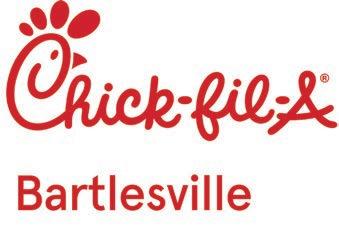
Tue, Mar 5
12 PM
In the Kitchen w/ Susan Bartlesville Public Library
600 A Johnstone Ave.
Please join us in person in Meeting Room A at BPL or live on the BPL Facebook page for In the Kitchen w/ Susan. This free program consists of eight healthy cooking classes. Susan is a local restaurateur with many years of cooking experience. She loves to share with us how she has made healthy cooking easy in her own home and brings her best ideas and practices to make us all better chefs.
6 PM
Johnstone Irregulars Book Club
Bartlesville Public Library
600 S Johnstone Ave.
This free book club – Johnstone Irregulars – meets on the first Tuesday of every month at 6 pm in the Literacy Services Office on the second floor of the Bartlesville Public Library.


Thu, Mar 7
4:30 PM
Network and Unwind Crossing 2nd 215 E 2nd St.
Networking event for professionals in the Bartlesville and surrounding areas that serve or do business with our senior population.
Fri, Mar 8
6:30 PM
Stronger Marriage Workshop
Dewey Church of Christ 1313 N Osage Ave.









7 PM
Benefit Concert
Oklahoma Wesleyan Museum
2201 Silver Lake Rd.
Fundraiser Concert to support the Lighthouse Outreach Center’s mission to provide help and hope for the homeless. Held at Lyon Hall at Oklahoma Wesleyan University, 2201 Silver Lake Road, Bartlesville, Oklahoma 74006. Enjoy a night of music with a concert by Christian Artists Blake & Jenna Bolerjack, a musical duo who sing a mixture of modern gospel and Christian styles of music. Known for their exciting power ballads such as God Hid A Lion, and Ain’t No Grave, this husband/wife duo has traveled across the nation with their concerts and even Europe for several tours.
Sat, Mar 9
9 AM
Shamrock the Ville Downtown Bartlesville
Shamrock the ‘Ville 2024 is the 15th annual St. Patrick’s Day celebration in downtown Bartlesville. Festivities include a 5K race, 1 mi. Fun Run, prizes and plenty of great costumes of green. All to benefit Catholic Charities-Mary Martha Outreach.


Tue, Mar 12
5:30 PM
Stained Glass Workshop
Okie Stained Glass and Mosaic
137 SE Washington Blvd.
Different patterns will be available and a variety of glass colors to choose from. All materials will be provided to complete your piece.
Sat, Mar 16
3 PM
State Park Tours
Osage Hills
2131 Osage Hills State Park Rd.
3 PM
DIY-U Kids’: Playful Garden Cart Lowes
2205 SE Adams Blvd.
Kick-off spring with your little builder as they create a garden cart planter. Kids can grow new skills and take home a fun garden project just in time to start some seeds!

Wed, Mar 20
10 AM
Animal Barn Open for the Season
Woolaroc Museum & Wildlife Preserve
1925 Woolaroc Ranch Road
One of the most popular spots for children at Woolaroc is our Animal Barn— originally used as the official Dairy Barn for Frank Phillips’ prized herd of cows. Now, the Animal Barn houses some of our favorite furry friends – which include but are not limited to rabbits, chickens, goats, and donkeys. Stop by and say hi! The animal Barn is open during regular business hours until September 3.
Sat, Mar 23
9 AM Adore
Hope Church
31625 US 75, Ramona
Come join Young Women 13-39 from the region for a 1 day free event. We will gather together and Worship Jesus, learn more about who He is in our lives! Lunch will be provided, coffee bar, and refreshments. There will be door prizes and lots of great fellowship. Space is limited so, please check going to the event!
Thu, Mar 28
7:30 PM
Future Chefs National Challenge
Hillcrest Country Club
1700 Hillcrest Dr.
Sat, Mar 30
9:30 AM
Easter at Frank Phillips Home
Frank Phillips Home
Join us for an EXCITING morning of festivities – including an Easter egg hunt, Easter egg decorating, and a live appearance from the Easter bunny himself. Your children and grandchildren will not want to miss this! FREE ADMISSION.









When this land was young, names like Jacob Bartles, William Johnstone and George B. Keeler emerged as promenade pioneers whose work transformed Indian Territory and the horseshoe bend of the Caney River into rival communities and finally the town of Bartlesville. However, none of these men came FIRST.
Preceding the Civil War, Indian Tribes were being relocated and settlers made their way into Indian Territory; some settlers were intruders, some were intermarried with trading permissions. James Butler established a trading post and post office in 1859 near present Oak Park at Butler Creek, also called Black Dog Ford for this shale crossing was on the trail used by Black Dog and his band of Osage to travel from the Baxter Springs, KS area to the Great Salt Plains. Butler answered the call of the Civil War and did not return.

joined the Civil War in 1861 and served with the Sixth Kansas Company B, Volunteer Infantry. In March 1862, Carr was discharged due to malaria which required several hospitalizations, one at the Kansas “Old Soldier’s Home” where he met Reverend Joseph Sykes, a Methodist minister, who spoke of buying provisions prior to the Civil War at a trading post/ gristmill below the Kansas line, along a bend in the Little Verdigris/Caney River.
Recorded early in Indian Territory history, Georgia transplant, Joel Mayes Bryan arrived in 1832 and owned at least ten stores, two gristmills and the Union Salt Works in the Cherokee Nation. Historians believe this Caney River millsite could have belonged to Joel Bryan or the earlier mentioned Butler family.

New York born and Kansas transplant, Nelson Franklin Carr
In the early part of 1866, Carr built an Indian trading post and established fur trade with the Osage Indians and other tribes
in southern Kansas. His trading post later became the town of Oswego and he served as Oswego’s first postmaster. His business dealings with the Osage, Delaware and Cherokee Indians brought him the acquaintance of Mr. Hilliard Rogers, a highly trusted and honored government scout under General Zachary Taylor during the Mexican War. Mr. Rogers invited Carr to his home where he met Rogers’ Cherokee daughter, Sarah Ann. The two became smitten and married in Kansas and then remarried according to Cherokee customs in Indian Territory in 1867, making Nelson a citizen of the Cherokee Nation and granting him an allotment of land, the same as a Cherokee by blood.

Wishing to expand his trading area, Carr set out for Indian Territory and, in September 1867, he established a trading post at James Butler’s abandoned Black Dog Ford settlement. He traveled back to Oswego to sell out his holdings and move his stock of goods and family to the new location, where he built a log store building, home and school to educate his children and others in the area.
In 1869, Carr traveled on a supply run to Fort Leavenworth, KS, leaving Mr. Dickerson, the bookkeeper and store manager, in charge. A band of Osage warriors clashed with a war party of Cheyenne near current Perry, OK and as they returned to their Kansas reservation, they came upon Carr’s trading post. They bound Dickerson and demanded all of the merchandise, to which Dickerson obliged under duress. The Osage loaded 50 ponies with all of the goods and left. Carr had about $4,000 invested in the trading post and settlement improvements, north of present Bartlesville. The loss was devastating, leaving Carr to abandon the trading business and turn to the timber and gristmill business.
In 1870, he cut a millrace channel in the horseshoe bend of the Caney River and packed the tunnel with sand stone. He then piled sand stone along the natural dam of the Caney River to force


water through his millrace, operating the millstones with the pressure of the eight-foot water drop, which energized the gristmill. The millstones were shipped from New York to grind his meal representing the first mechanized enterprise in northeastern Indian Territory.
However, he was not alone. Just after the Civil War ended, Osage trader Cyprian Tayrien operated a small store along the horseshoe bend of the Caney River before moving to Sand Creek; and Osage Chieftain Hard Rope’s band camped south of the Caney River at what is now Bartlesville for several months between 1870-1871 before relocating to the Osage Reservation.
Carr sold the gristmill to Jacob Bartles March 20, 1875 for $1,000; then, turned his attention to farming and oil production, as well as raising Herford cattle and Steel Dust and Morgan horses at his CBar Ranch. In 1884, Carr was said to have had 1,000 acres under cultivation, 5,000 acres under fenced and to have raised 47,000 bushels of corn; also ran several thousand head of cattle and 126 horses on his range. The discovery of oil changed his focus and he is said to have had 100 producing wells.
Nelson and Sarah Roger Carr birthed eight children and, in 1909, they purchased a home at 311 S. Creek in Bartlesville, followed by the purchase of 301 S. Creek, where they lived in retirement. Nelson Carr passed away in 1925 and Sarah Ann followed him in 1929. They were quietly laid to rest in the White Rose Cemetery Mausoleum in Bartlesville.
Nelson Franklin Carr was the founding father of two towns, Oswego and Bartlesville, and he brought the first mechanized enterprise to Indian Territory. He was truly an adaptable pioneer who let no stumbling block deter him. And yet, true notoriety escaped him. For all of Mr. Carr’s pioneering contributions, he has become the “Forgotten Pioneer.” His name has not been recognized in the naming of area streets, buildings or towns…look for this to change in the near future.
Cherokee maiden, Sarah Ann Roger’s parents, Hilliard Rogers and Martha Ann Fields, departed in the fall of 1838 on the Trail of Tears traversing TN, KY, IL, MO and AR, arriving at the Cherokee Nation, I.T. March 1839. Having both survived the forced migration, they married in 1841 in Indian Territory. They died in 1870, just under eight months apart and were laid to rest in the Tyler-Irwin Cemetery, south of Bartlesville, celebrated with Trail of Tears markers.
Now You Know





The Scudder one-room school was established in 1914 in the south-central portion of District #8, which was east of Dewey. The school was built there to ease growing pains of the Wayside one-room school, (not the Wayside Elementary School in Bartlesville), which was located just west of the Washington/ Nowata County line. It was named for the Scudder family, who were very prominent in the area. The school closed in 1939, and students transferred into Wayside School and in 1940 Wayside School was annexed into the Dewey Public Schools.
So, why is the one-room school at Prairie Song that Debbie mentioned in her article also named Scudder School? Prairie Song is located at the Moore Ranch, owned by Marilyn Moore Tate. The land initially belonged to Marilyn’s grandmother, Emma Scudder Moore, on her Indian allotment. When Marilyn and Kenneth built the school, they wanted to honor Emma and her family. If you tour the school, you will be able to see a picture of students from the original Scudder School in 1937, with a list of the students, which included two Scudder children.
On September 16, 1987, the Washington County Historical Society and the Tates dedicated the Scudder School at Prairie


Song to long time local teacher, Ida Allen. Ida was born in 1902, died in 1992 and never married. She considered her over 1,000 students as her children. Ms. Allen taught school in Dewey for 47 years, 42 of those years as a 2nd grade teacher. She was loved and respected by her pupils and their families. Ida came from a family of educators, and attended school in Dewey, graduating in 1920. Her parents were W.B. and Susie Keefer Allen, local teachers. In 1965, Ida was selected teacher of the year in Washington County. She began teaching in 1920, just three weeks before her 18th birthday. She loved all her students and kept up with them throughout the years, even attending their reunions. As local historian, Edgar Weston, said, “She was the most beloved teacher that ever taught in the Dewey schools.” I love studying about Ida Allen. In fact, several years ago I was asked to portray her for a Tom Mix Museum fundraiser, which was a lot of fun.
I have also had the privilege to portray an early 1900’s schoolmarm to students in the Scudder 1-room school at Prairie Song. Sometimes I give the students a tour of the schoolmarm’s house, located next to the school. Students from Bartlesville, Kansas and Owasso have come to Prairie Song for field trips and the school is always included.

I was laid off recently. Ten years of service and dedication to a company that I spent, literally, half of my life working for, gone with a single conversation by phone. Now, I was not without concern with this new development in my life, however, I was not as upset as one may believe I should’ve been. Yes, I was upset to an extent, understanding I had given half my life over the years to this place; developed strong, lifelong relationships, missed out on crucially important moments with my family due to my dedication to providing for them with this company, but I wasn’t as worried or dismayed by this sudden change in my life. I was actually filled with a sense of hope and optimism that I truly could not explain.

have molded my mindset and spirit for such a time as this.

My wife, the most beautiful, grace-filled, loving and inspiring person in my life, was not shaken in the slightest by this new development in our lives. My “most special friend,” which is my title for her, was incredibly supportive and steadfast in the face of this seemingly devastating challenge presented to us at this moment in time. She prayed with me, for me, for us and our family, and continuously reassured me of our future security and prosperity, in a way that I can only describe as heavenly. You see, our faith in Jesus being a focal point for us daily, was evident in her to the extent that I cannot describe with words. I am in awe of how God has given me strength, and understanding in this moment through watching her navigate a situation that destroys lives, with incredible reserve, faith, and dignity.
Understanding where I have come from, and what I have been through as a man who has made many mistakes, the lessons I’ve learned from moments of great trial in my life
Blessings through hardships have been displayed in acts of love from my wife and others that God has providentially placed next to me throughout. I can look back over my life and specifically list moments where I experienced great pain and hardship, followed almost immediately by moments of great clarity and direction. From times of war to the loss of family members, and even almost seemingly debilitating experiences in dealing with complicated relationships with family and friends, I can tell you with the utmost certainty that I only persevered by the grace of God and my faith in Christ Jesus. It would seem almost by design that a strength is developed within me to a greater degree with every single trial I face.
The Apostle Paul, in his letter to the church in Philippi, encourages his brothers and sisters to persevere and be content in all situations as he wrote from prison the words, “I can do all things through Christ who strengthens me.” I know this verse of scripture is on many a coffee mug and t-shirt, however, I believe that the inspiration that comes from Paul’s expression of faith here in the midst of his suffering carries with it a vast spiritual uplifting that I and other Christ followers can praise God for as we wander into unanticipated moments of trouble throughout our lives, gaining strength with every experience. As I look ahead at what may be, I know that there will be life filled with hurt, confusion, and doubt, but also life filled with promise, purpose, faith, and joy. There may not be strength enough to overcome the moment, but strength will come through the moment.


It was during a hambone performance while entertaining both of my oneyear-old granddaughters, when I realized that hitting myself in the name of rhythmic entertainment is simply an ancient regression in the art of percussion. I learned to hambone by watching my uncle, who grew up in the panhandle of Oklahoma during dusty hard times, and where his father (my maternal grandfather) played something that you are supposed to rhythmically hit, the drums.
Hamboning is the height of dust bowl sensibility, when you have the urge to play something by hitting it, but you’ve sold all of the things that react in a percussively pleasurable way, out of financial necessity. So you simply play your body like a drum set, thighs, chest, sometimes if you are careful, your forehead, creating a rhythmic orchestration of limbs and torso in syncopated delirium. To hit yourself because you are happy seems strange, although clapping is a similar and accepted behavior that responds to certain entertainment stimuli through the act of hitting yourself. If you don’t believe musical gyrations can be strange, just sit back at a wedding and watch folks dance to The Sugar Hill Gang singing Jump On It. There is no other sensible explanation for wedding guests to engage in fundamentally indefensible human movements. Which is the same thing that happens to me when I entertain my grandkids. Absent the wonder of their mouths agape in shock and appreciation, I would never engage in such unhinged physical lunacy.


My granddaughter, Holland, just got a new pair of sneakers. She dances in her shoes with such focus that she can’t look up. She stares down at her shoes in wonder. Which is kind of the sweet spot of hamboning, to expressively and joyfully act out the rhythm of music without inhibition. Holland’s shoes float and skip across the floor accompanied by her happy coos. I am struck by the realization that I love this child deeply, even as she stares down at her shoes, unable yet to express with words the joy she feels while dancing.
It is a wonder that we are who we are. Some of us dance
naturally, gracefully, as if there is nothing more perfect than a waltz or a two-step. But there are those like me who dance like Elaine on Seinfeld, and don’t even care. Because most of us look ridiculous anyway. But, I sense the truth of life as a dance more deeply these days, after holding my newborn children and their children, and acting ridiculously odd while entertaining them. Indeed, life is a dance, according to C.S. Lewis, and “God is not a static thing, but a dynamic, pulsating activity, a life, almost a kind of drama.” Sounds like hamboning could be a spiritual moment.
So, this is the dance I do, slapping my thighs and hips and torso in ¾ time, dancing while changing diapers, and sleeping on the floor next to their bed when they sleepover because sister Emery is being born the next day. I awake with a smile and a backache but the dancing must go on. I’m aware how much Holland’s life is about to change because she will have a little sister. Maybe she will teach Emery to dance one day. What a wonderful thing it is that despite the stupid things I have done in my life, my grands are my best fans, looking on in fascination while I hambone, as the adults in the room roll their eyes.
One day, they will make their own noise by hitting things. In fact, they have already started, slamming down their toys against the glass top of the coffee table with glee, as I marvel that the glass doesn’t shatter into a thousand pieces. They dance with abandon and emit a cacophony of sounds that want to be words, but aren’t yet, pulling the tails of cats, pounding the shins of tall people, and testing the limits of their cribs, like the Great Houdini. Like me hamboning, they are trying to find some sort of rhythm with whatever they can find to hit. One day they will discover a sweet song, and their percussive strikes will be surgical and lovely, maybe even world changing. It’s enough to keep hoping for such, and praying for that rhythmic melody to shine down on the dancing feet of children everywhere. They are our future, they are our hope. Lord I believe, help me when I doubt and fail to sing along.




















 BARTLESVILLE
BARTLESVILLE



LPN APPLICATION DUE IN MARCH
The deadline to apply for the August
Practical Nursing program is March 15, 2024. Graduates of the program are eligible to sit for the National Council of State Boards Licensing Exam to become a Licensed Practical Nurse. The program is approved by the Oklahoma Board of Nursing and accredited by the Accreditation Commission for Education in Nursing (ACEN). To learn more or apply online, scan the QR code.
APPLY HERE!
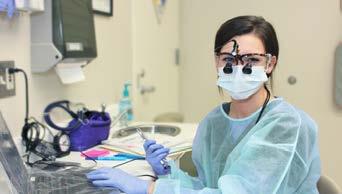
DENTAL OPPORTUNITIES
Did you know that Tri County Tech is more than just a school? We also offer low-cost quality care in a state-of-theart dental clinic, in partnership with the University of Oklahoma College of Dentistry. You receive a FREE screening appointment to identify any service you need. Treatments are provided by students and are supervised by our faculty and a licensed dentist. Use the QR code or call 918.331.3218 to learn more and schedule your FREE screening today!
LEARN MORE!

The Next Step Conference is tailored for undecided high school seniors, providing insights on the benefits of CareerTech attendance and the positive impact of program certifications. Prospective attendees are encouraged to register today!
REGISTER!

Join Tri County Tech for their Career Fair on March 28! This is a come-and-go event.
Morning session: 9-11AM
Afternoon session: 12:00-2:45PM
Companies or businesses interested in becoming vendors can sign up using the QR code below.
REGISTER!
HAVE YOU HEARD?

CNA APPLICATION DUE IN MAY
The deadline to apply for the June CNA program is May 20, 2024. Individuals can start their career as a Certified Nurse Aide (CNA) in just a few short weeks. Nursing homes, hospitals, adult daycare centers, personal homes, and assisted living facilities all require nursing aides to act as a helpful liaison between the RN or LPN and the patient. On average, CNAs earn *$23.94/hour upon entering the workforce.
APPLY HERE!
COMMENCEMENT IS ALMOST HERE!
Mark your calendars! Tri County Tech’s Commencement Ceremony is right around the corner. Join us on Thursday, May 16, 2024. We are so proud of our graduates and would love for you to celebrate with us.

Join us in June for our annual STEAM Summer Camp at Tri County Tech! Our early bird enrollment begins March 1. STEAM Summer Camp is from 8:30am – 3:30pm with lunch, morning & afternoon snacks, and a t-shirt. 2024 dates:
• June 3-7: current grades 7-9
• June 10-14: current grades 3-4
• June 17-21: current grades 5-6
Be sure to follow us on Facebook for more info as we get closer to summer!



Bartlesville families have a new playhouse in town to entertain their littles. Sugarbear Playhouse is quickly living up to its slogan of “come play and stay while” with its safe indoor option for children to discover the world of play.
“I have two young children and fell in love with play areas and play cafes and wanted to bring the concept to Bartlesville,” said Katelyn Shorter, owner. “Our community has limited options for safe and clean children activities, and I thought why shouldn’t I give it a shot?”

Shorter, a recreational therapist and child development specialist, knew she had the qualifications that would make parents feel good about choosing this option. She felt she could help spread awareness about child development in play in a structured way. She opened just six months ago at the Eastland Center located at 576 SE Washington Blvd. The name is a combination of her daughter and son’s nicknames “Sugar” and “Bear.”
“Parents or grandparents can bring their laptop and use our free Wi-Fi for work, study or just returning emails while your child enjoys their playtime,” added Shorter. “Part of the perk is being able to enjoy your children in play and not have to stress about cleaning up.”
She shares that each toy meets a high standard and switch out the toy options often. The theme and toys get overhauled regularly to stimulate a different place of play for returning families. The playhouse also gets sanitized throughout the day to maintain a clean and hygienic environment.
“We have ‘Yuck Buckets’ on the wall where if children put a specific toy in their mouth, parents can put them in the yuck bucket and we deep clean them before returning them to the play area instead of just wiping them down with a non-toxic cleaner,” explained Shorter.
No reservations are needed with no time limits. Families can bring outside food and drink in when snack breaks need to occur. Families can go home and take a nap and come back before closing that day, and it falls under the same day pass.

A day pass is $12.99 per child and punch passes are available. Adults are always free. Sugarbear Playhouse offers specials throughout the month so follow their social media pages or visit their website at sugarbearplayhouse. com to save money.
Sugarbear Playhouse can also host birthday parties as well as hosting community events such as Touch a Truck, “Caregiver and Me” Yoga, Messy Play Day, Small Business Pop ups and more.
“Come let your child make a mess with us!” said Shorter. “We go to an empty station if a child has abandoned that play thought and restage it so other friends can come to that station to play. We do not go behind the children and pick up but try to create a welcoming environment for all children to play.”
They encourage families to bring their out of town family members like grandparents to interact with their child at their playhouse as they know they may not be able to foster at home due to the number of toys we have.
“We want to be as community based as possible and link up with other local businesses to bring our children and families amazing childhood memories and experiences,” said Shorter.


I just got lost
Every river that I tried to cross
Every door I ever tried was locked
Oh, and I’m just waitin’ ‘til the shine wears off
That’s the first chorus from Coldplay’s song “Lost.” There have been moments (many) when I have felt lost at worst and stuck at best. As the band U2 would say, “Your wheels are turning, but you’re upside down.”
These are the moments when the landscape doesn’t change, but you still feel like life is passing you by. For someone whose greatest fear is getting to the end of my time only to find my life inconsequential (that I waisted years and left no mark) - the idea of being stuck and like I am losing time is incredibly frustrating. (Actually, my greatest fear is living out the storyline from the movie Shawshank Redemption, but that’s a whole other counseling session.)
So…stuck happens .
But what can you do when you feel stuck? Or how do you get unstuck? You probably have some tricks of your own.
When my life feels like it is locked on repeat, I like to sit down (metaphorically and physically) and start by putting everything on the table, all the options. Moving. Going back to school. Changing jobs. Quitting. Starting. Reaching out.
Shutting doors
What is it I am pursuing and why? Will it really make a difference when I get there? Is that really what I’m after ?
When I look back at where I started my career in film and video 30 years ago (at age 6), I can easily find gratitude for the goals I didn’t reach. In the moment, each of those unrealized dreams felt like failures. Now so many of those things feel like I escaped a life sentence for a life I didn’t really want. I was killing myself in pursuit of something that was surely going to kill me.
So there is a freedom that comes when we put everything on the table and consider all the options. I’ve gotten more comfortable with seeing life as an evolution or growth which gives me the freedom to let some things go after a season.
As an artist or creative person, sometimes it’s the tool or medium that gets in the way. My wife and daughter just finished a month-long guitar class. Both of them have been playing piano since they were old enough to push down the keys. But different instruments require different muscles and inflections. The conversation may still be music, but the language has changed. And sometimes that changes the words we use and opens a whole new palette of underused colors for us as we search for the right words to express ourselves in this new
language. As a songwriter, my wife comes to uniquely different songs on guitar than piano. I love that.
The same can be true for painters who switch to pencils or sculpting. Or writers that try different genres. Or landscapers who force themselves to use native plants only. Or cooks who ban a favorite ingredient for a month, just to force themselves into something new.
Getting unstuck takes a certain level of bravery.
Your path may be worn, even monotonous, but it’s a “known ” and for some of us there’s a comfort in that. Forcing yourself to meet new people, go to new cities, try new churches or restaurants or bars . . . all that takes discomfort and bravery. But that can also lead to new paths and discoveries.
Maybe Cherry Bordeaux ice cream isn’t the only flavor of ice cream you like. Maybe a weekend without drinking might open up other experiences. Perhaps joining a wine club will expand your horizons.
It seems small, but there are times when one change begets more change. One step leads to another. Who knows, maybe one night you’ll sit on a different side of the couch or just leave your phone on the end table and not mindlessly scroll . . . unless it’s to read someone’s totally insightful and entertaining column, then by all means “like, like, like.”
Stuck happens
There are also simply quiet seasons in life.
There are moments of calm, of still waters. How can you tell the difference between quiet and a time for change? If you get anxious and jittery, you might take a direction that will pull you out of the next exciting step in your unknown journey. What’s a girl to do? I can’t answer that for you. You have to feel your own E.T. heart light shine for that.
Do you remember the movie E.T.? Every time the stranded little alien felt love in his heart-especially for his lost homehis heart would shine through his chest. His heart light let him know (and others) that he was on the right track. I use my own “heart light” to make decisions too. Should I stay or should I go? Do I hold, fold, walk away, or run? Is this simply a quiet season or a season for change? In these moments, I try to get a sense of what my heart is telling me (and then do my best not to feed it the words I want to hear).
Regardless of what season we find ourselves in - remaining open, standing guard against the shadows, venturing off the worn path, taking off the pony-ride-harness . . . all these things can breathe life into us and open us up into something wonderful if we let it.
What change could you make to your schedule?
Could you get up 15 minutes earlier to meditate so you don’t have to leave the house with your hair on fire? Could you eat one week without the TV on? Could you pick a different restaurant this Friday night . . . maybe in a different city . . . maybe with different friends . . . with dishes you can’t pronounce? Or maybe change for you would be staying home on a Friday night and waking up on Saturday without
a headache.
It’s all there.
But sometimes to get there we need the help of others, right? When your “wheels are turning, but you’re upside down,” sometimes you need help getting your life upright. That’s hard to do on your own. Friends (not enablers), spouses, counselors, pastors, support groups . . . these people can help. They can often recognize patterns, help you to see past your blindspots, give you the confidence to take a risk or save you from really bad decisions - like bangs. (I don’t know, maybe it’s time for bangs or color or piercings or ink . . . that’s between you and your heart light.)
What I’m saying is the help of a “qualified someone” can sometimes help determine the difference between a slight case of boredom or curiosity and a time for a change . . . like a life beyond yoga pants . . . or maybe just adding in the yoga part.
Just remember at times “to be stuck is to be human.” You are not the only one.
The question is really what is our right response?
Are there others that can help? What steps can I take right now to change things up and see what my next steps should be? What are the things that make me feel most stuck? What are the things (without harming others) that I can do to change that? Is it simply a matter of time or is this the time? (Check your heart light, then maybe check with another.)
In the meantime, I think you’re fantastic. I’m proud of you. Remember to breathe. Let’s meet back here next month. Cheers.










The members of my group on Facebook, Once Upon a Time in Bartlesville, have always enjoyed remembering the days of the old library/Civic Center where so many of us who lived downtown merely opened our front door and walked to the sidewalk’s end where all the world’s books were at our very fingertips. However, the old building we all remember was more than a library and civic center combination. So many City offices were located in its interior that you almost needed a guided tour to find the office you were looking for. However, the one that stands out the most vividly was the first one you encountered upon entering the south end of the building – the City Water Department.

When I was still almost a newlywed, one day the phone rang and the voice on the other end of the phone directed me to come to the City Offices concerning my unpaid water bill. I immediately became sick to my stomach as I gathered up the proof I needed to show to the still familiar sounding voice I recalled from those summer days so long ago. And to my surprise it was indeed the same lady who made me want to turn around and run all the way home as a little kid in grade school and I got about as nauseous as I did back then as well.
When I was just a kid, occasionally my summer morning cartoon-watching was interrupted by my mom with a favor to ask of me. “Rita, would you put your shoes on, please, and go pay the water bill for me?” It was always a bit of a twofold request because I enjoyed half of the venture but the other half made me shake in my boots.
We lived only a few blocks from the water office and three out of the four seasons provided the backdrop for an ever so pleasant tour de force. The other side of the coin was not so pleasant and that was when I encountered the lady behind the counter with whom my grade school age self had to conduct business. I never felt such fear until I shivered in my boots on the day I first knelt before Miss Fannie Spencer who taught Algebra at Central Junior High School.
I showed the most confident lady all the cancelled checks for our water bills, and she still insisted that we were delinquent by a month. My husband was driving home from work and saw me sitting in my car in front of the water office. He stopped to see what I was up to and found me crying like a baby. He took the cancelled bills and went inside to face the music and she still insisted we owed the City for a month’s worth of water and whatever else was charged to the bill back in the ‘70s. He finally came home and was about as upset as I was minus the crying.
It wasn’t long before our phone rang and although it was the water office, it was a different lady. She told my husband they were installing a computer system and that was the cause of the mix-up. She sincerely apologized to my husband and there was never another mix-up after that. However, when the light turns red at Adams and Johnstone, I still look at the corner where once stood the old Civic Center that once contained the City Water Dept and, if I let myself, I can still get a few gas bill butterflies in my stomach. If I let myself.





Emma Lou Gray shares a birthday with Ronald Reagan, has lived most of her life within a mile from where she grew up, and has a knack for sharing her feelings through poetry. As she prepares to turn 100, she looks back on a life shaped by faith and her Cherokee heritage.
Her advice to the younger generations is simple.
“Learn to enjoy right now,” Gray said. “Don’t look to the future, enjoy the present.”
Gray’s Cherokee heritage has helped influence the course of her life. Born on February 6, 1924, in Ramona, Okla., to Richard and Maggie Scullawl, her father was a full-blood Cherokee, and her mother part Cherokee, part Irish. Gray herself is ⅞ Cherokee, and she grew up on her mother’s 80-acre allotment of land near Ochelata. Fond memories include strolling with her mother along the railroad tracks to the Matoaka depot, where a signal summoned a train. Trips to Bartlesville for shopping at J.C. Penney’s and other stores were capped off with a delightful strawberry soda from the corner store—a taste that lingers vividly in her memory.


The family farm was the backdrop for cherished childhood activities, from playing with a rag ball with the neighbors to watching her dad’s Cherokee stomp dances. Gray’s grandfather, a founder of the Sugar Mountain Baptist Church, brought a unique cultural blend, with services attended primarily by Cherokees and visiting preachers delivering sermons in Cherokee—a language Emma Lou, regrettably, never learned from her parents.

school, Gray married Donald Elam after a courtship filled with movie dates and ball games in his brother’s Ford Roadster. Raising six children, two of
whom survive, became the focal point of her life.
Shortly after their marriage, the Elams moved to New York state for a job opportunity. But the family never really settled down and considered it home, and returned to Oklahoma during World War II to help care for Don’s aging parents. There, Elam received a draft notice, but ended up being unable to serve due to a back injury from being thrown off a horse. Gray’s primary memories of the war include rationing, especially sugar, which was always in high demand.
Gray had a fiercely independent streak, and after her children were older, she decided to work outside the home. While she was shopping, she saw a sign advertising jobs at Montgomery Ward and decided it was perfect for her. She also learned to drive a car despite her more traditional husband’s protests. She eventually would go on to work at Phillips and Kress’s as well.
Gray always loved trying new things and took up bowling at age 82, continuing it on until her 90th birthday. After her husband’s death, she met her second husband, Leonard Gray, at the bowling alley. They had twelve great years of marriage before he passed away.
Gray has always used poetry to reflect on life and express her feelings — especially after her little boy passed away — and now she has shared poems with friends and family, including one that was read at a funeral. She also finds herself reflecting on what it means to grow older.
“As elders, we still like to be considered as a person who likes to be included, and not just someone who is old and just needs personal care,” Gray said. “We love to have visitors occasionally, play table games, work puzzles and maybe, if we are able, go for an outing, like a ride to someplace close. Remember that we are still alive.”
As she celebrates her hundredth birthday, Gray wants to give credit for her long life to God.
“There must be something God still wants me to do. Whatever it is, I’m here,” Gray said.


Turn back the clock 100 years in Fairfax, Oklahoma and I would have been sitting in the First National Bank with the Shoun doctors’ offices and the Masonic Lodge upstairs. Turn back the clock a couple years, and Leonardo DiCaprio would have been getting spanked by Robert DeNiro upstairs and Lily Gladstone would have been receiving poisonous insulin injections in the doctor’s office during the filming of Martin Scorsese’s Killers of the Flower Moon.

Turn back the clock one month ago, and there I was sitting in the newly-renovated Water Bird Gallery, owned by Danette Daniels – formerly the First National Bank back in the 1920s.
Looking out the huge windows to the south, this amazing piece of historical architecture is sided by brick streets, still holding their own, from another era. It’s almost as if history whispers through the bricks and stones that hold Fairfax together at its seams. This was the place where it all happened back in the days of the Reign of Terror and this is the place about which the Big Screen and Hollywood have exposed to the world.
“I want to be part of the solution,” Daniels said in reference to historical tragedy in her town, and she is doing just that.
The Water Bird Gallery was formerly located on 6th Street in Pawhuska, just around the corner from The Pioneer Woman Mercantile. Daniels purchased the old First National Bank building in Fairfax, intending to put a museum in it following the filming of Killers of the Flower Moon. However, when her downtown rent went up in Pawhuska, she decided to utilize all the space in the first floor of her newly-purchased building in Fairfax for both her store and museum. Since October 2023, The Water Bird Gallery and Museum has been welcoming in both customers and visitors to their little piece of downtown Fairfax.
In addition to the museum and store, The Water Bird Gallery

also has an event space with a fully furnished kitchen, available to be rented by the public for meetings Tuesday – Saturday between 10 am and 5 pm.
Within the store, you’ll find autographed copies of Killers of the Flower Moon by David Grann, as well as A Pipe for February by Charles Redcorn and The Deaths of Sybil Bolton: Oil, Greed, and Murder on the Osage Reservation by Dennis Mcauliffe Jr. You will also find jewelry like that worn by Lily Gladstone in the movie, native blankets, and so much more!
In addition to items you can purchase, The Water Bird Gallery also has historical items on display that you’ll be the richer for having heard their story and taken a moment to learn about Osage history and culture. Daniels’ father is one of the last full-blood Osages still living and she loves taking time to visit with guests about her rich heritage.
Coming later in the year, Daniels plans to re-stage the upstairs where portions of Killers of the Flower Moon were filmed, and have tours available to the public.
Put Fairfax, Oklahoma on your list of places to visit – and when you do, be sure to stop by The Water Bird Gallery to meet Danette Daniels, who also recommends visiting the Killers of the Flower Moon Exhibit in the lobby of the historic Tall Chief Theater just across the street, as well as taking time to enjoy a gourmet cup of coffee and homemade cookie while you’re in town at Treats Coffee Shop located just south of the downtown area!
For more on The Water Bird Gallery and the filming of Killers of the Flower Moon in Fairfax, pull up the “Killers of the Flower Moon at The Water Bird Gallery in Fairfax Oklahoma” episode on the Calling to the Good podcast! You’ll enjoy listening in to Daniels’ perspective and hope for the future.
As always, I’ve enjoyed your coming along for the ride. Thanks for going On the Road with me this month – to Fairfax!
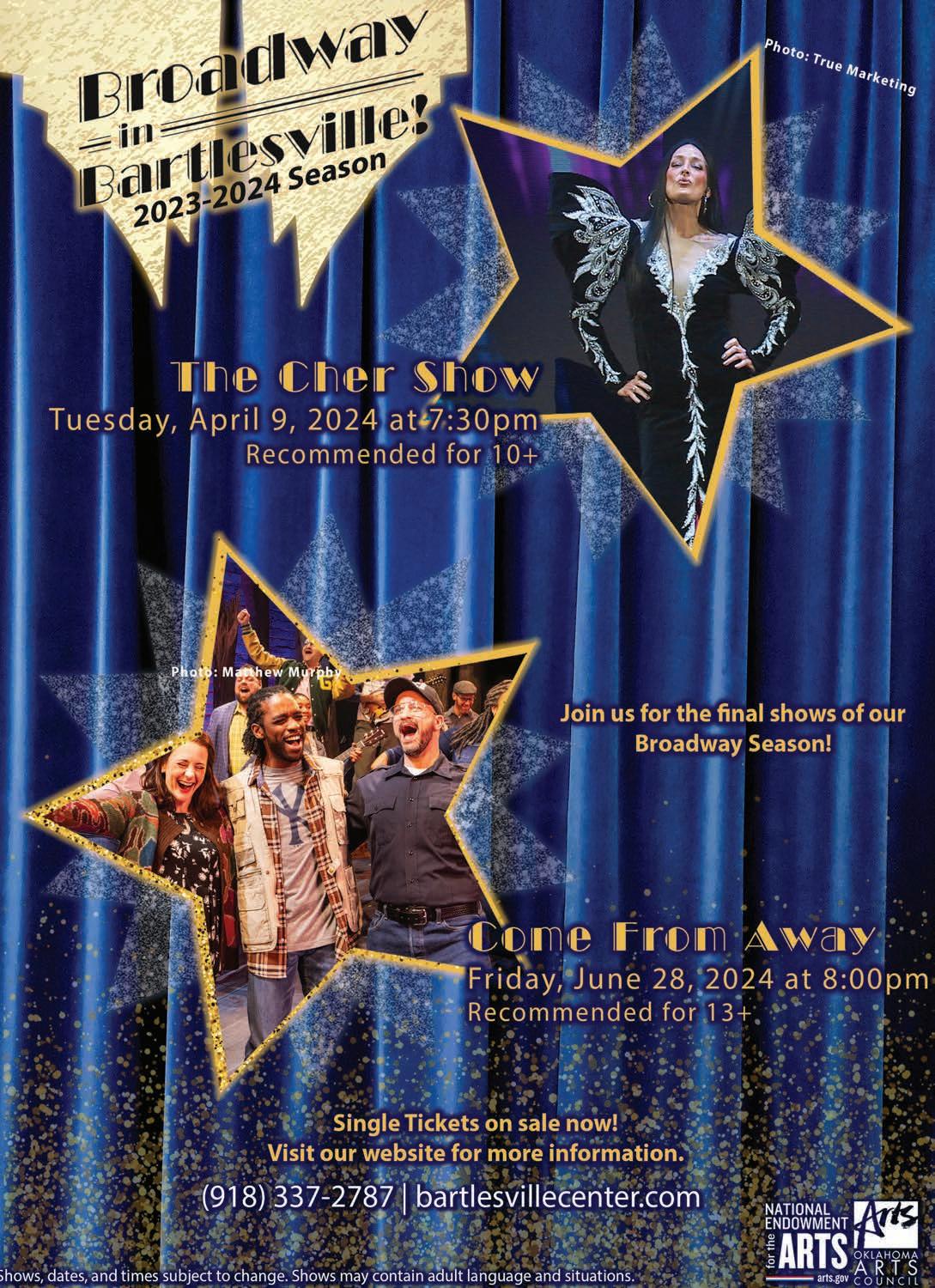

The Center for arts, events, and community is proud to continue its 21st season of Broadway in Bartlesville! lineup this year. Short season subscriptions are currently on sale and includes the remaining two national touring Broadway productions. Single tickets go on sale eight weeks prior to each show date.
THE CHER SHOW makes a stop in Bartlesville on April 9, 2024. Superstars come and go. Cher is forever. For six straight decades, only one unstoppable force has flat-out dominated popular culture—breaking down barriers, pushing boundaries, and letting nothing and no one stand in her way.
THE CHER SHOW is the Tony Award-winning musical of her story, and it’s packed with so much Cher that it takes three women to play her: the kid starting out, the glam pop star, and the icon.
COME FROM AWAY has been for June 28, 2024. This award-winning musical tells the true story of the small town that welcomed the world. Broadway’s COME FROM AWAY has won Best Musical all across North America! The story takes you into the heart of the remarkable true story of 7,000 stranded passengers and the small town in Newfoundland that welcomed them. Cultures clashed and nerves ran high, but uneasiness turned into trust, music soared into the night, and gratitude grew into enduring friendships. Don’t miss this breathtaking new musical. On 9/11, the world stopped. On 9/12, their stories moved us all. The show is rated PG-13.
Bartlesville residents are also in for a special treat, as former Bartlesville High School student BRANDON WONG (Drums/Percussion) is a New York based freelance


percussionist and drummer from Bartlesville, Oklahoma. He has performed at numerous venues around the city, drummed several summers for New London Barn Playhouse, and just finished with the national tour of Fiddler on the Roof. He earned his Bachelor of Music from the University of Oklahoma and Master of Music from New York University. Check him out on Instagram: @bkwong.drums.
Special thanks goes to The National Endowment for the Arts, the Oklahoma Arts Council, and many local sponsors who make the 2023-2024 Broadway in Bartlesville! series possible.
Val Callaghan, Managing Director for The Center, also wants to remind everyone that The Center is not just a stage for amazing Broadway productions. It is also a fabulous venue for business and personal events. The facility has five versatile spaces available to rent. The Performing Arts Hall, Balcony, Lyon Gallery, Studio Theater, or Community Hall. The Balcony, as well as the Studio Theater, accommodate up to 120 people with tables and chairs set up in the room. The Lyon Gallery seats 80 people and the Community Hall can house up to 380 people.
For tickets, rates, or for more information, visit bartlesvillecenter.com or call 918-337-2787 and use the rent a space tab for information and rental rates on all five spaces available for rent.



When professionals explore caves, they take helmets, rope, first aid kits, and maps. This is called “Spelunking.” I have never been spelunking.
When rednecks enter caves in jeans, backwards ball caps, and headlamps, it’s called “Caving.” I have been caving a lot!
As a teenager, I explored any cave I could find in Northwest Arkansas. Once a passing stranger heard me discussing a caving adventure and interrupted. “When I was your age, I used to take girls swimming in a HUGE cave with an underground waterfall.”
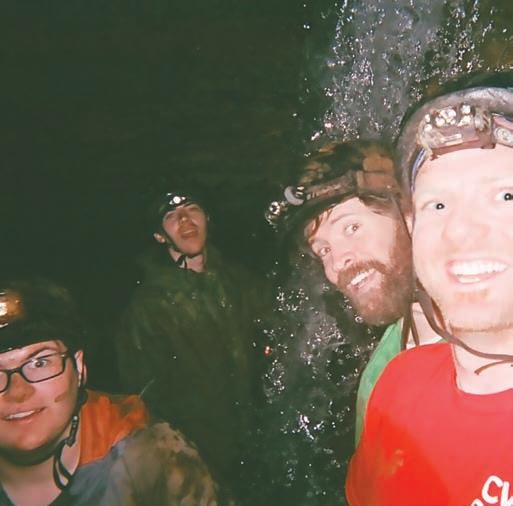
Huge cave? Underground waterfall? GIRLS! I was ready to grab a headlamp, but he left the conversation without telling us where the cave was located. I asked around, but nobody had heard of a cave like that.
A decade later I had a wife, toddlers, and a mortgage, so my caving days were long behind me. One day while reminiscing with a work friend, I mentioned that my one regret was never finding the cave with the underground waterfall.
“Dude!” He exclaimed. “I know that cave!” A week later, four of us hit the road for Cushman, Arkansas.
Blowing Cave is huge. You can line 3 semi trucks across the mouth of the cave with room to spare, and it is at least 1.5 miles deep. We followed a stream through a labyrinth of chambers until we eventually came to a place where the ceiling met the floor, I assumed we were lost. Instead, my friend pointed and said, “That’s the Meat Grinder. You go first.”
Upon closer inspection, the ceiling did not actually touch the floor. Instead, there was a crack about 24 inches tall, and barely wider than my shoulders. Entering the Meat Grinder required me to lay on my back and stretch my arms out above my head. Supposedly this would allow me to grab the ledge of rock on the far side of the shaft and pull myself through. From there I could climb up through a chimney into the next room. I laid back and began to booty scoot into the tunnel, immediately making a horrifying discovery: the further in I went, the lower the ceiling was.
As the ceiling slanted toward me, I was forced to turn my head sideways. I lowered my head to the right as I pushed

myself deeper in, and found myself staring at a rock wall inches from my nose. The floor was pressing into my back, the wall was blocking my vision, and the ceiling was preventing my head from turning. I wouldn’t describe myself as claustrophobic, but this no longer felt like being in a cave. It felt like a coffin.
On the verge of panic, I dug in my heels and pulled myself out towards my feet, gaining enough clearance to roll my head to the left. Now instead of just seeing a wall, I could see through a slit in the rock, giving me a tiny view of water on the other side. This was enough to steady my heart rate, and with a push of my heels, I once again slid deeper into the Grinder. I inched down the narrow tunnel, feeling ahead with my fingers, hoping to find the ledge which marked the exit. Nothing. My back burned from scraping over sharp rocks. No exit. The stone descended toward my face. Still nothing! Another push and the ceiling was pressing against my chest. Struggling to inhale, I let out all my breath and pushed again… and my fingers rounded over the lip of the exit. I pulled with all my strength and suddenly I was free!
Sucking in a huge breath of musty air, I let out a triumphant cry. The guys on the other end of the Meat Grinder heard me and called down the tunnel, asking if I was alright. “It’s super easy,” I lied. “Come on through.”
The rest of what I experienced in the cave is hard to describe. I can tell you what I saw, but I can’t make you feel the elation of seeing it after surviving the Meat Grinder. Something about overcoming that kind of fear enriches every other experience. We passed cave shafts flooded by water so clear I couldn’t tell if they were 5 feet deep or 50. We passed silently through rooms filled with sleeping bats and translucent crickets. We waded through knee deep water past ancient mineral columns, and at some point we began to hear a low rush. Amplified by the stone hallway, the noise grew louder the deeper we went, crescendoing as the narrow walls opened into a circular room. We stopped, awe-struck as we beheld the source of the noise. After a decade, I had reached the underground waterfall.
And it was worth the wait.




•

•
•
•
•


•
•
•
•
•
•
•
Russel Shelton was born February 25,1924 in Lone Oak, Kentucky. He was raised on a farm and went about chores on the farm and plowing with horses. He graduated high school 1942.
When the Japanese bombed Pearl Harbor, he told his dad that the US would wipe out Japan in one week, but his father disagreed. He joined the Army 28 November 1942. He joined the Army because he was interested in the ASTP program, where the Army would send you to college. After he joined, he was sent to Camp Roberts for Basic Training. Basic was a lot of running, calisthenics, forced marches and a lot of heat.
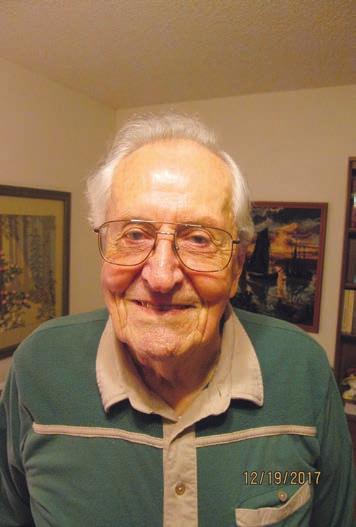
The ASTP program sent him to Clemson University to study to be an Army engineer. He lived in a dorm and attended classes for three months, but the program was cancelled because the Army said it would be two or three years and they needed infantry soldiers in the field now, not engineer officers.
He was sent to Louisiana and assigned to the 44th Infantry Division during the Louisiana Maneuvers. There were lots of mosquitoes and it was wet and never did know the objective of the maneuvers. The maneuvers lasted two months then sent to Camp Phillips, Kansas and went through Basic again just to kept the soldiers busy. His unit was then shipped to Camp Miles Standish in Boston and boarded the USS General Gordon and left the US 5 August 1944. The trip took 10 days and he said there was not much to do in those 10 days but stand in the line at the mess hall.
The ship landed at Cherbourg, France after D-Day. The city of Cherbourg had been completed destroyed when the Germans refused to surrender and most of them fought to the death. As they marched through Cherbourg, he said it was just a pile of rubble. They camped for a few days outside of Cherbourg, then moved to the fronts at Luneville, France, not far from the German border.
His unit first made contact with the Germans on 18

October 1944 at Luneville. During the battle, he drove an ammunition truck and brought supplies to the men fighting on the front lines. His unit was in several fights with the Germans, and he always brought ammunition and always on alert for snipers and land mines. The ammunition trucks were always a prime target for the Germans.

In one battle in France, the company next to his was almost completely wipe out and those not killed were taken prisoner. His unit crossed into southern Belgum, then into Germany. They crossed the Rhine River on a pontoon bridge at Worms. They were south of the Battle of the Bulge, but many troops in his unit were sent north for the Bulge and everything slowed down during the battle. The civilians they met in Germany were women, old men and children and said they all looked pitiful. After the Battle of the Bulge, the German soldiers began retreating and they began chasing them.
Normally they walked but moved by trucks when chasing the retreat. They crossed into Austria and the war was winding down and thousands of Germane began surrendering. They stopped at Ruette, Austria and Germany surrendered. There was no celebration because they were informed they would be going to the Pacific to fight the Japanese and prepare for the invasion. He was in Austria one month, then sent to England and his whole division came home on the Queen Elizabeth, 15,000 troops. The ship pulled into New York Harbor and when he saw the Statue of Liberty, it was a very pretty sight.
He was given a 30-day leave and came home and while on leave, the atomic bombs were dropped on Hiroshima and Nagasaki and the war ended and he was very happy not having to go for the invasion of Japan. He was discharged 5 November 1945. He attended Northwestern University, receiving a degree in chemical engineering. He applied with Phillps Petroleum, was hired and moved to Bartlesville in 1948. He retired from Phillips in 1985.


Karen, with tears in her eyes, reflects on the transformation she witnessed in her son Tom following his numerous visits with his seven children at the Washington County Detention Center.
Tom, who has been battling drug addiction since his adolescence, has been imprisoned on several occasions.
“I’ve been the one looking after the children,” she shared, deep in thought. “I’ve been alone, caring for the children while their father is incarcerated. Their mother is ill, so I’m the only one who can step in. I’ve been fortunate to receive a lot of help from the community.”
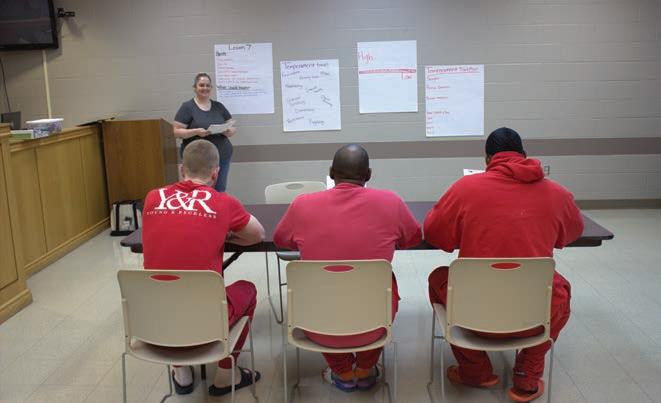
an evidence-based approach to teaching parenting skills to those involved in the criminal justice system. The curriculum, which is delivered over six weeks to both male and female inmates, addresses the profound impact of parent-child separation with a nontraditional approach to parent education. The program helps parents promote healthy child adjustment, prevent child problem behavior and build resilience in children.

“The program you offer has been a blessing for my son and my grandchildren. The jail staff went the extra mile and truly made a difference in my son’s life.”
The Parenting in Jail (PIJ) program, located within the Washington County Detention Center, is aimed at rehabilitating incarcerated parents with children. The program, initiated in August 2022, is a joint effort between the detention center and Family & Children Services, a Tulsa-based Certified Community Behavioral Health Clinic (CCBHC). It provides parenting classes to both male and female inmates.
“We see immense benefits for the whole family when incarcerated parents and their children can have positive, consistent contact,” said PIJ Director Lucie Doll. “Our goal is to provide participants and their families with the tools to make their time together healthy and meaningful and to reduce the financial barriers that often keep them apart.”
Originally started in Tulsa County, the program has been running there for several years. Thanks to a Temporary Assistance for Needy Families (TANF) contract granted by Oklahoma Human Services, the program has now expanded to five more counties.
An educator from FCS visits the detention center two to three times a week to conduct parenting classes. The program uses the Parenting Inside Out ® (PIO) curriculum,
Program participants who show considerable progress and meet certain criteria are allowed weekly visits with their children. Since the program’s inception, 78 children have had the opportunity to visit their incarcerated parent. The program aims to equip these parents with practical tools to better support their families upon release. Washington County Undersheriff Jon Copeland has noticed positive changes in inmate behavior since the parenting classes started.
The success rate of this program in Washington County is among the highest in the six Northeast Oklahoma county jails where it is implemented. To date, the program has served 108 participants (including the current group of 16) and has produced 57 graduates. Eighty-one percent of these graduates have increased their contact with their children through the program.
“The program is helping inmates become better citizens and family members upon their release, and to prevent them from re-offending,” said Copeland. “Our main goals are being achieved with great success. The biggest challenge has been changing the norms and restoring a healthier family dynamic. Some of them are not familiar with what those dynamics are.”
This initiative shows how well-thought-out programs can have a positive impact on families, even in demanding situations. Alongside the PIJ, the Washington County Sheriff’s Office reinstated the GED (General Education Development) program a year ago, in partnership with FCS’ Women in Recovery Employment & Education team. The WCSO celebrated its first graduation in November 2023.




The most-liked pet will be highlighted with a full-page picture in our magazine. The Judges’ Choice Winner will be featured on our April Cover!



• Although we love them all - scaly, slimy, feathered, and fluffyyour pet must be furry to compete.
• Pets MUST be currently living and pictured by themselves in order to compete.
Registration opens on March 1 at noon at bartlesvillemonthly.com. Facebook voting will be held March 8 at noon CST to March 15 at noon CST.
QUESTIONS? Visit us online at bartlesvillemonthly.com for more details. Entries are limited to the first 100 online reservations.

We can’t wait to meet your furry friend!
Sponsored by

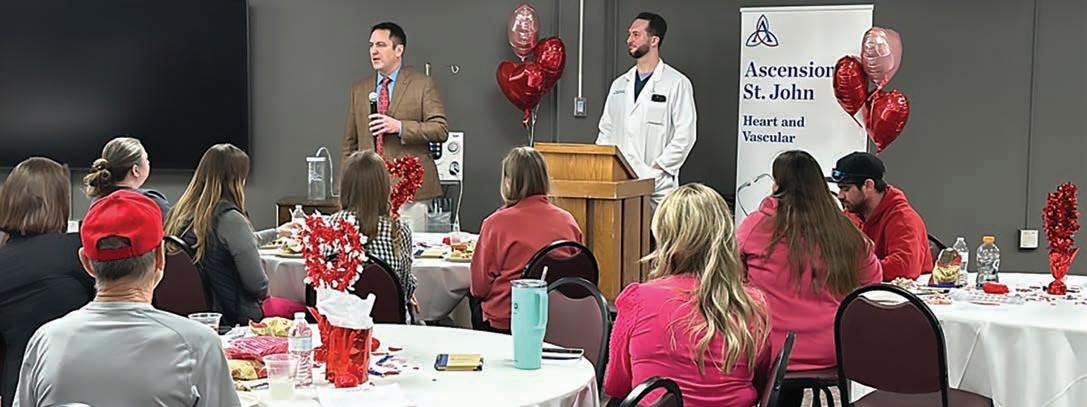
Ascension Jane Phillips Medical Center hosted Oklahoma’s first ever Heart Recovery Reunion for four of its heart failure patients who were successfully treated by medical staff at Jane Phillips Medical center and the help of the Impella, the world’s smallest heart pump, on Wednesday, February 14th.
There were over 40 people in attendance at the reunion where patients Kerry Thomas (33), John Link (75), James Henley (79) and John Wehmeyer (87) were reunited with their interventional cardiologists, Anderson Mehrle, MD and Todd Thomas, DO, and other members of their medical team to celebrate their incredible native heart recovery following their heart procedures. All of the patients were extremely thankful, naming specific medical staff members who made a significant impact on them and their families during a trying and scary time. They “couldn’t say enough about the wonderful care” they received from everyone at Jane Phillips and how grateful they are to be able to return to their families and lives with thankful hearts and improved quality of life.
Kerry Thomas, 33, a young mother of four, who is pregnant with her fifth child, gave an emotional testimonial at the event. As a young woman, she never thought she’d be experiencing heart failure and the possibility of losing her pregnancy and the ability to see her children grow up. In January 2024, while five weeks pregnant, Kerry was treated by Dr. Thomas after arriving to the hospital via ambulance after experiencing a heart attack and coding 3 times. Kerry was in cardiogenic shock and her heart was very weak, so Dr. Thomas implanted the Impella CP to allow her heart to rest before clearing a 100% blockage in her largest coronary artery (her proximal LAD) and placing two stents. Thanks to his quick action, the care of her medical team and the support of the Impella, Kerry and her baby survived and are doing well. She is extremely thankful to have returned home to her four children and fiancé, and they cannot wait to welcome their newest member of the family later this year.
John Wehmeyer, 87, is the honored patriarch in his family. In August 2023, Dr. Mehrle found Mr. Wehmeyer was suffering from a reduced quality of life due to left main coronary artery

disease and performed an Impella supported percutaneous coronary intervention (PCI) to clear blockages and restore blood flow to his heart. Since his procedure, Mr. Wehmeyer has returned to his passion of playing guitar with his band and has even played multiple paying gigs. His family is overjoyed to see him back to his vibrant self, bringing his joy and a zest for life to all once again.

Dr. Thomas also performed an Impella supported PCI on James Henley in September 2023 following complaints of chest pain, heart palpitations and inability to complete typical tasks like mowing the lawn. Dr. Thomas treated his coronary artery disease by clearing blockages and placing two stents. Mr. Henley is back to working out three days a week and is thankful to be back at home with his wife of 54 years, Carole. They look forward to making more memories with their family and watching their grandchild grow up. Fun fact – a family annual tradition is to compete in the Tulsa Run. This year, the 47th annual TTCU Tulsa Run, Oklahoma’s most historic race, is on his 80th birthday on Oct. 26, 2024, and “Lord willing” he is expecting to place 3rd for his age group.
Dr. Thomas also performed an Impella supported PCI on John Link in July 2023 to treat his multivessel coronary artery disease by clearing blockages and placing a stent. Mr. Link is enjoying an improved quality of life and expressed thanks to the full medical team at Jane Phillips Medical Center for providing him with great care and allowing him more time with his wife and family.
“My















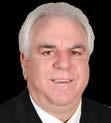
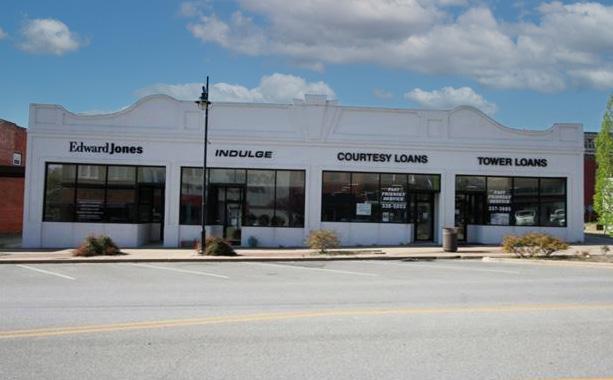











 Grace McPhail
Mikka chaMbers
Grace kinslow
harMony sMith
Grace McPhail
Mikka chaMbers
Grace kinslow
harMony sMith
 cooPer wood
Grant clark
Jacob Veit
eli robertson
riley dounG
cooPer wood
Grant clark
Jacob Veit
eli robertson
riley dounG








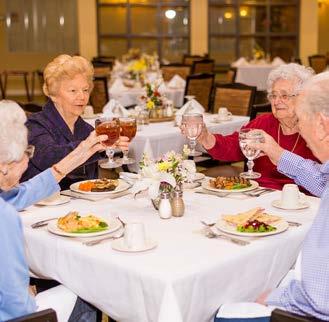

Green Country has seniors in and
Green Country Village has seniors in Bartlesville enjoy and great more than 30 years. Whether you or someone you considering memory care, Green Country is the to connect, grow.
Green Country Village has helped seniors in Bartlesville enjoy private, maintenance-free residences with exceptional services and great hospitality for the last 30 years. Whether you or someone you love is considering independent living, assisted living or memory care, Green Country Village is the place to live, connect, grow.
great than 30 you Country
(918)
Call (918) 335-2086

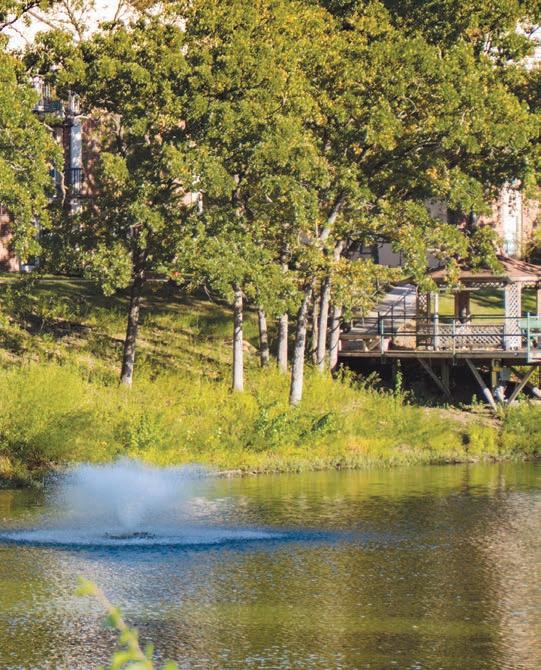

We understand the importance of knowing our customers and providing exceptional service. Our more than 60-year commitment to Bartlesville is built on trust. At Arvest, we’re ready to help you succeed financially.

Oklahoma. Where the wind comes sweepin’ down the plain. Surely there must be some good come from that!
On March 20, 1948, a tornado touched down near Will Rogers Airport in Oklahoma City and moved eastward, eventually reaching Tinker Air Force Base on the eastern edge of the city. The twister caused extensive damage at the base, both to buildings and aircraft. Thankfully, and perhaps miraculously, the tornado caused only minor injuries to base personnel, but the buildings and aircraft did not fare as well.
There were eight injured personnel on the base, including three military air traffic control staff in the base control tower. In total, 54 aircraft were destroyed, including 17 C-54 transports valued at $500,000 each. Also destroyed were 15 P-47 fighter jets and two B-29 bombers. Approximately 50 other aircraft were damaged and over 100 vehicles were destroyed. Damage to the base and aircraft was estimated at minimum well over 10 million dollars.
The tornado produced a record amount of damage to that date in Oklahoma’s history, with the event prompting the first efforts in tornado forecasting, initiated by the military. It was a milestone made even more interesting as just five days later the first tornado forecast was made, with a verified tornado in the same exact location.
The military had done extensive weather forecasting during World War II, so it only made sense it could focus its efforts on targeted development of tornado research and forecasting. Previously, there were concerns with any sort of public announcement ahead of a weather event, with some believing it could cause widespread panic. However, after careful review of the tornado strike at Tinker Air Force Base, the military recommended the meteorological community reconsider its position and that a method be developed to warn the public ahead of such forecasted events. Specifically, the Air Force urged base commanders to develop safety precautions in effort to minimize personnel and property losses during such violent storms.
On March 25, 1948, another tornado developed near the Tinker Air Force Base and moved northeast across the base, causing destruction for a second time in less than a week, striking just 100 yards from previous tornado’s path. A total of 84 planes were hit, 35 of which were destroyed, including three C-47s, eight P-47s, 18 B-29 bombers, and 20 P-17s. Hangers and other buildings were also completely destroyed. The second tornado was described as a “white finger” rather than the “black funnel” of March 20th, and was successfully forecasted for the first time ever,

using new methods devised by Air Force weather forecasters. The Air Force officers who issued the forecast were Lieutenant Ernest J. Fawbush and Captain Robert C. Miller.
Throughout the 1950’s, the Air Force’s tornado forecasts continued to reach a significant number of the civilian population. At that time, the Air Force distributed forecasts to Air Force and Army bases throughout the country as well as the Weather Bureau’s offices in Oklahoma City and Kansas City. However, the Weather Bureau seldom used the forecasts, suspecting the methods used by the Air Force were unscientific with debatable results. The Bureau largely ignored the tornado warnings and failed to act on them.
In 1951, 156 tornado alerts were issued by the military and were verified with one or more tornados. Soon, alerts started leaking to the public media and as the next tornado season approached in 1952, midwestern newspapers published stories advising specially trained meteorologists at Tinker Air Force Base working closely with the Weather Bureau in Kansas City were in charge of a tornado warning system and could be expected to give timely warnings of tornados before they struck.



